Brașov
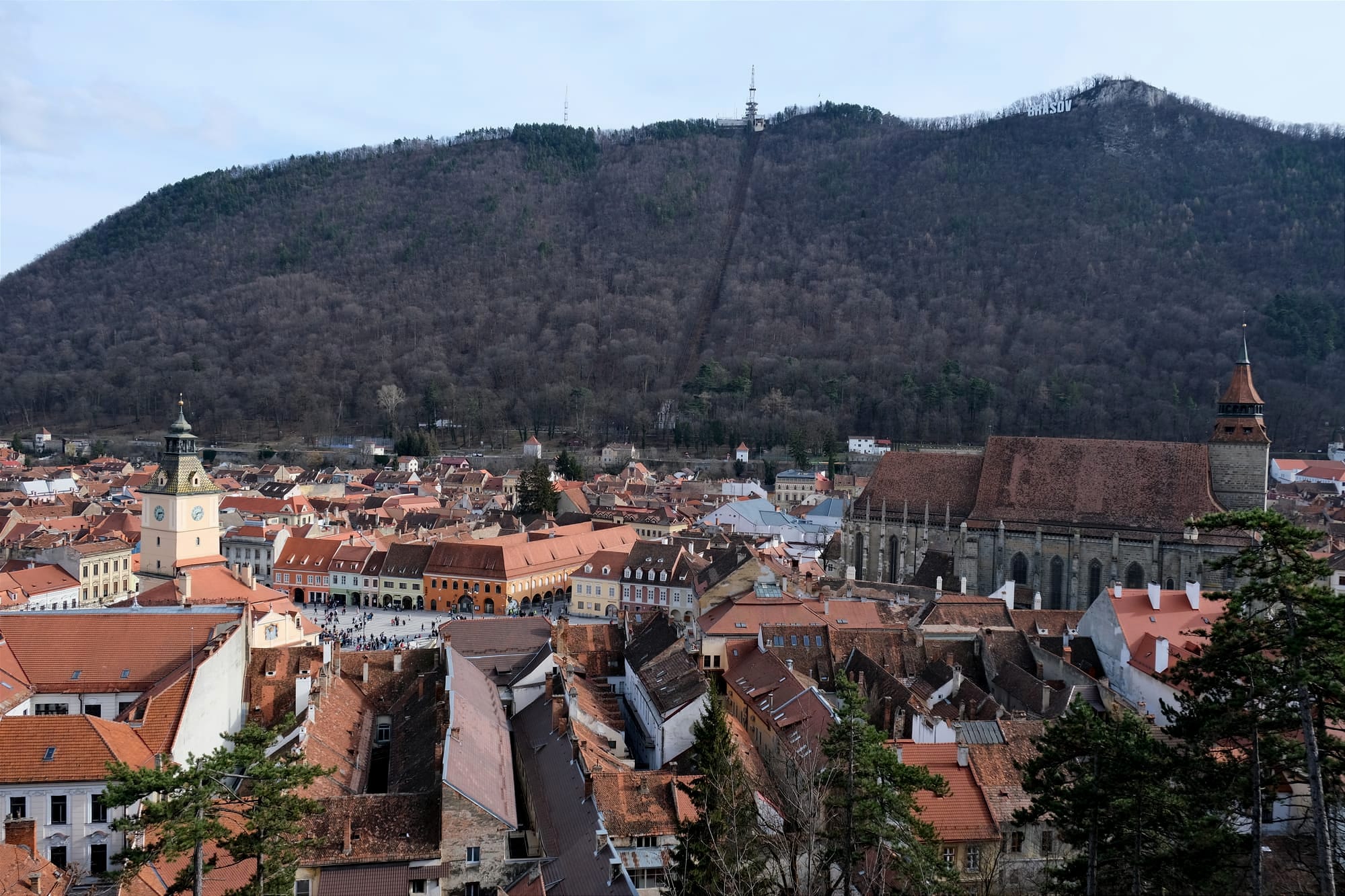
I first visited Brașov in late December when I came here to go for a hike in the Piatra Craiului mountains. The city looked really nice, it was close to the mountains and a good size with a walk-able city centre. I began wondering if I could stay here for a time as this place seemed like it would be a better fit for me then Bucharest. In early January, as I was figuring out my travel plans, I researched Brașov and I found a nice place to stay, right between the old town and the mountain. Because of my scheduling I could only stay in Brașov for three weeks in February, but oh did I enjoy those three weeks here.
In this post, I want to share some of the photos I took in Brașov during my stay here. My accommodation was right at the edge of the old town. I was only a two minute walk away from the central town square. This was such a boon for me as I was within walking distance of many good cafes and restaurants. Two streets away from the accommodation was Tampa mountain, that soared above Brașov and has many hiking trails through it. This place was perfect as I was close to good food, and good walks.
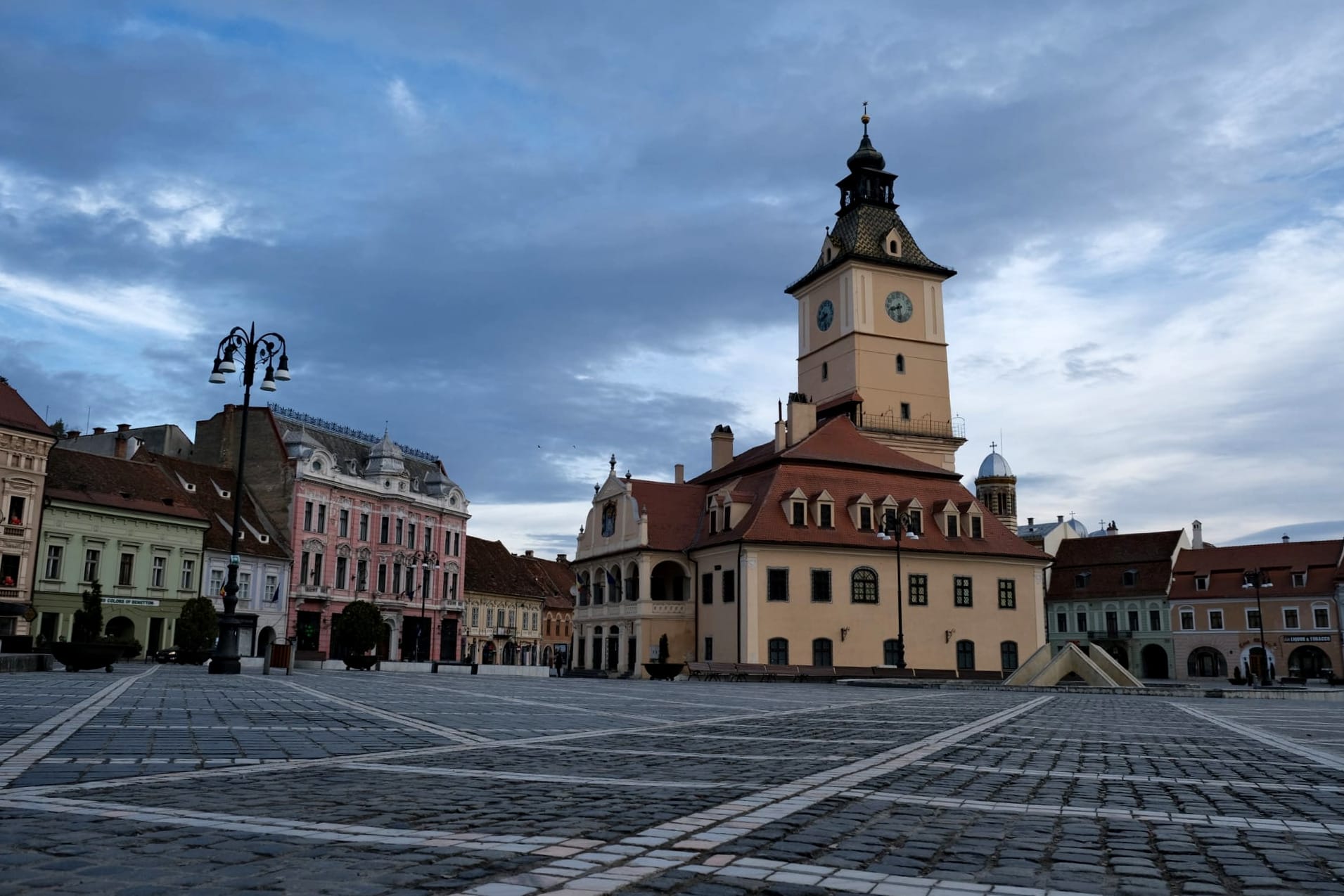
This is the Council Square featuring the town hall. This square was triangular in shape and on this morning was empty but normally it is a popular spot. In December this was where the Christmas markets were.

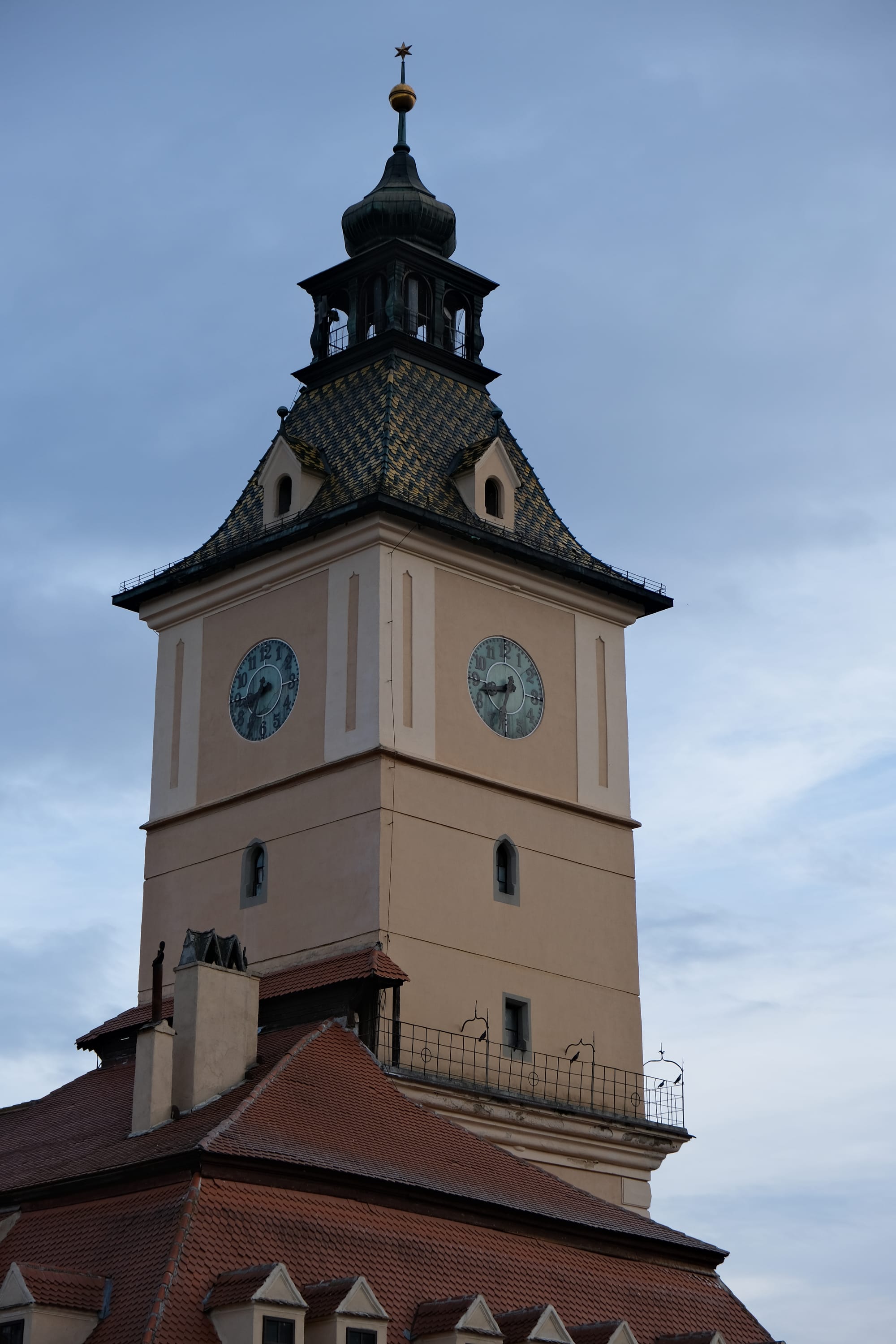
Another view of the town hall. I often walked through the square and past this building during my time in the city. Something I didn't notice until my last day here was the colouring of the clock tower roof, it almost looked like it had an iridescent gleam to it.

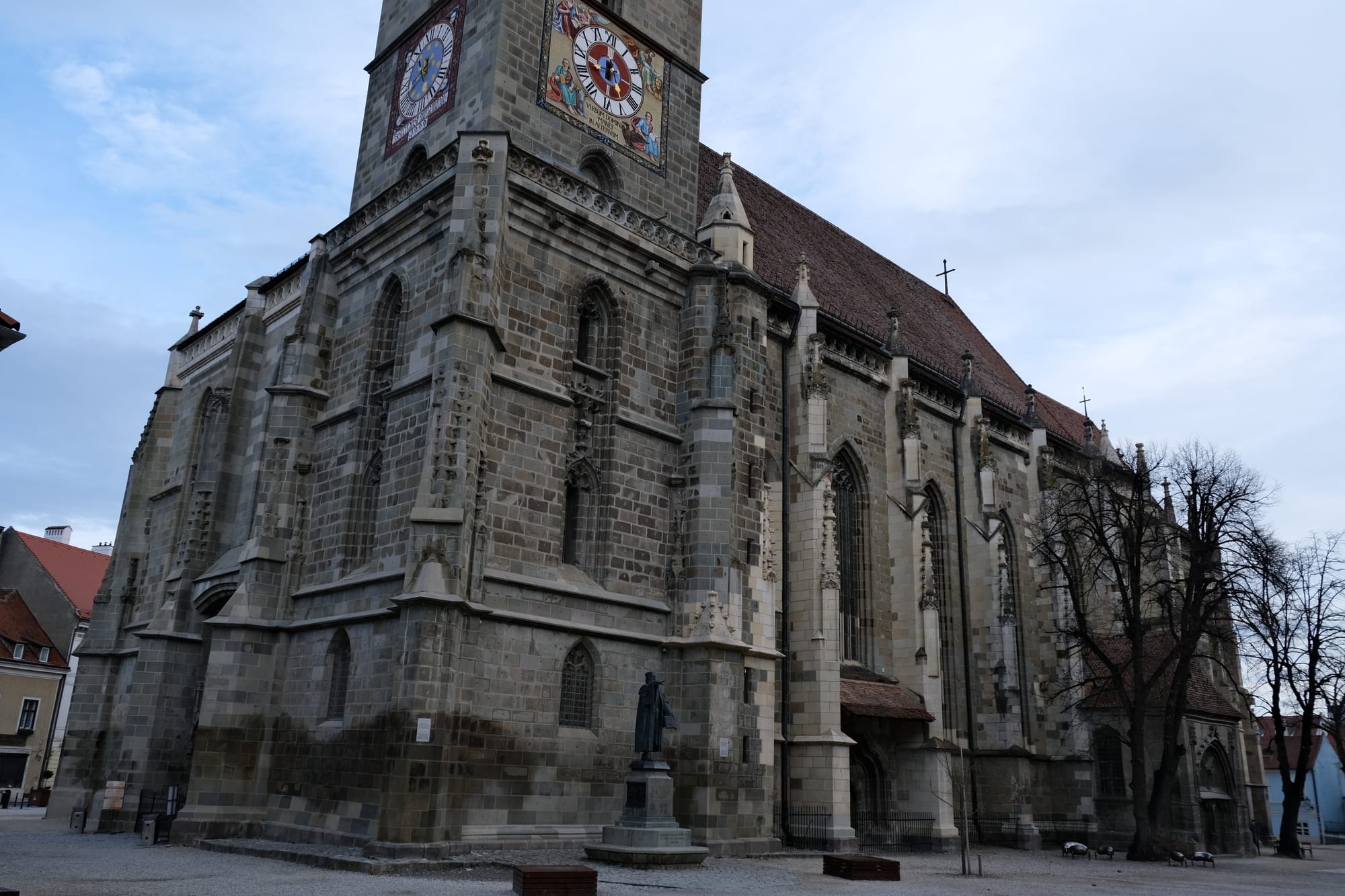
Next we move to the Black Church. This structure was huge and towered over the surrounding buildings. It is situated near the Council Square and opposite its front doors is a lovely cafe (CH9 specialty coffee) that I visited a few times.
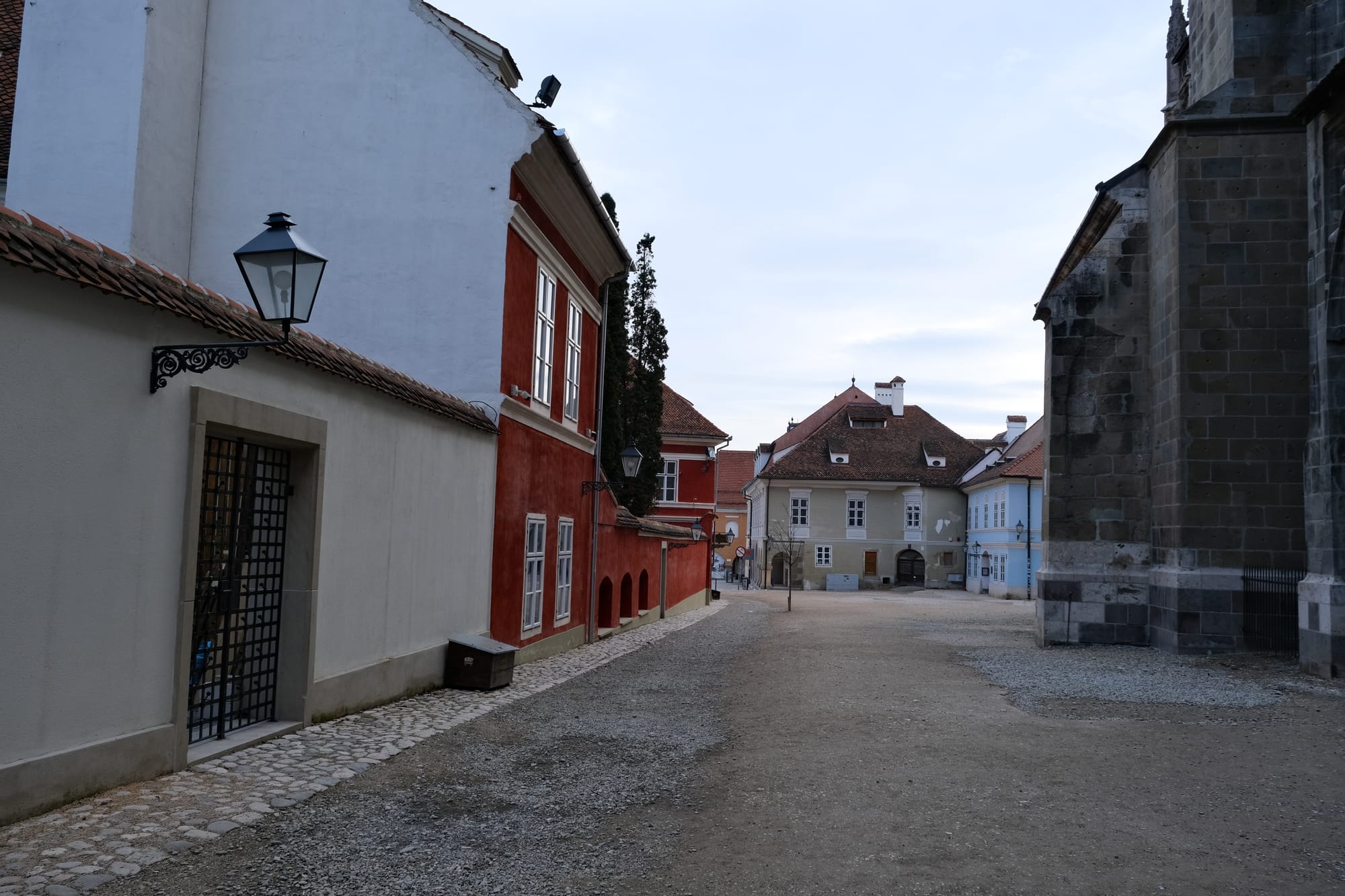
This image shows the road next to the church. This path connects to the Council Square.
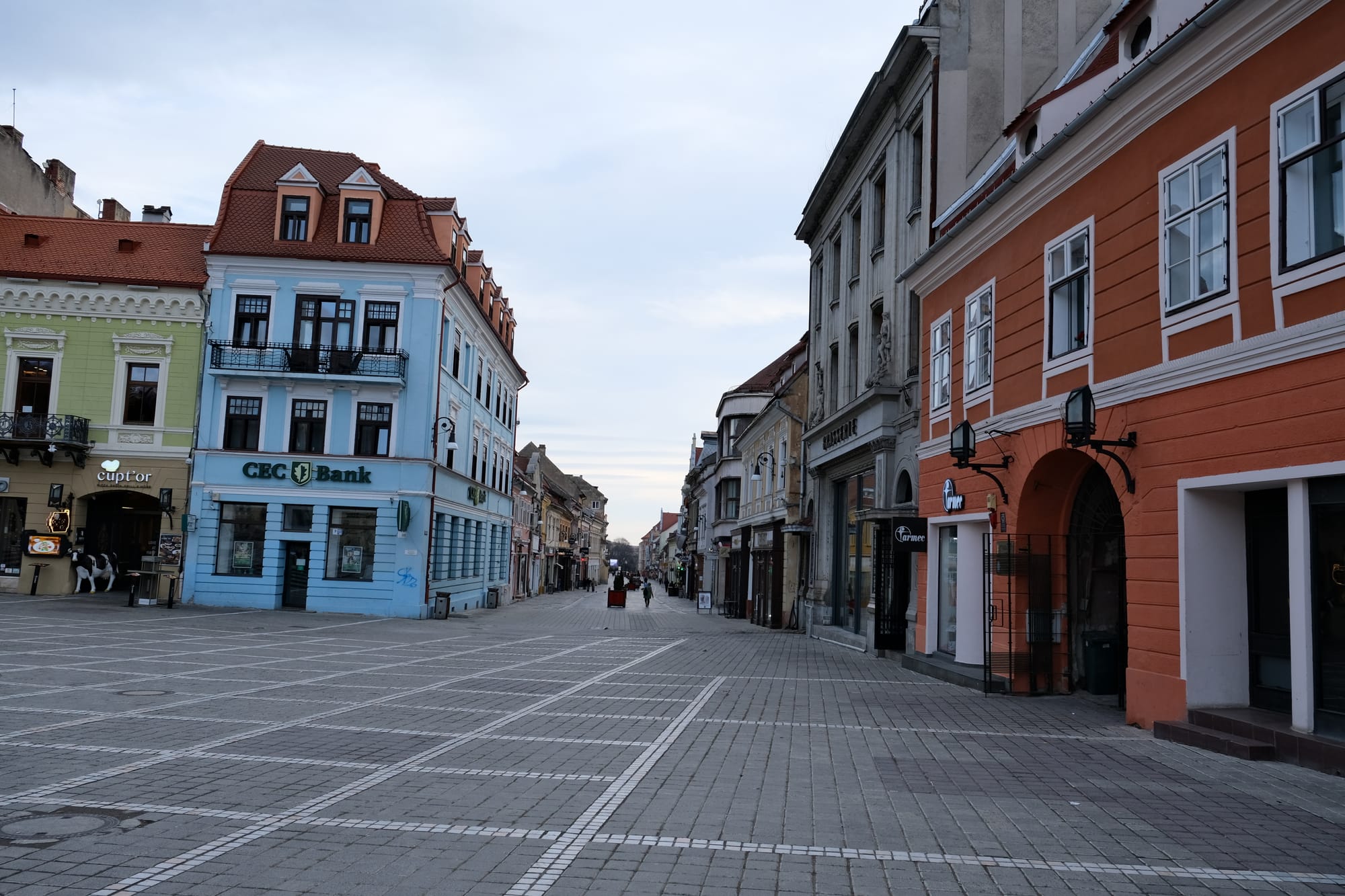
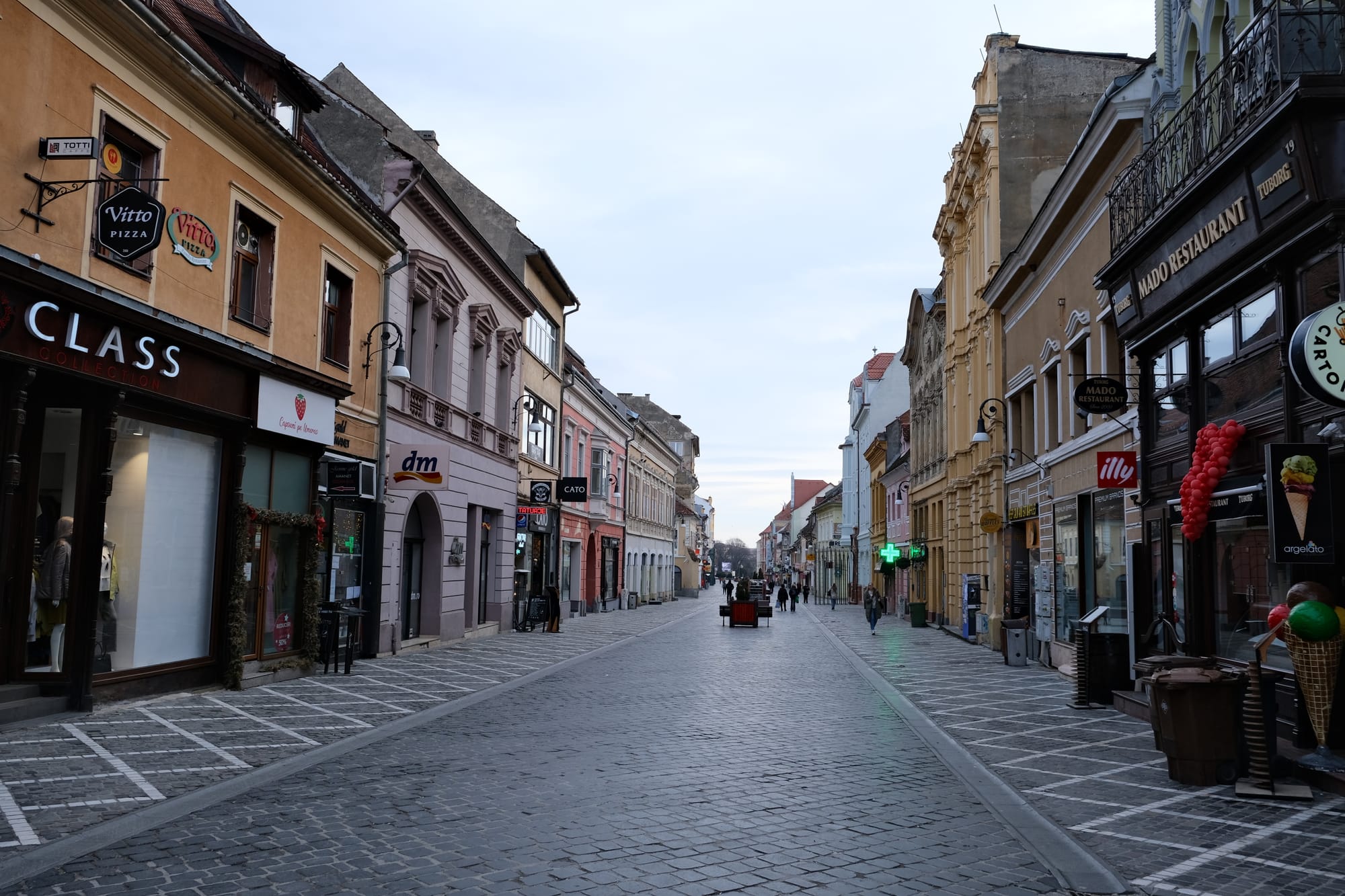
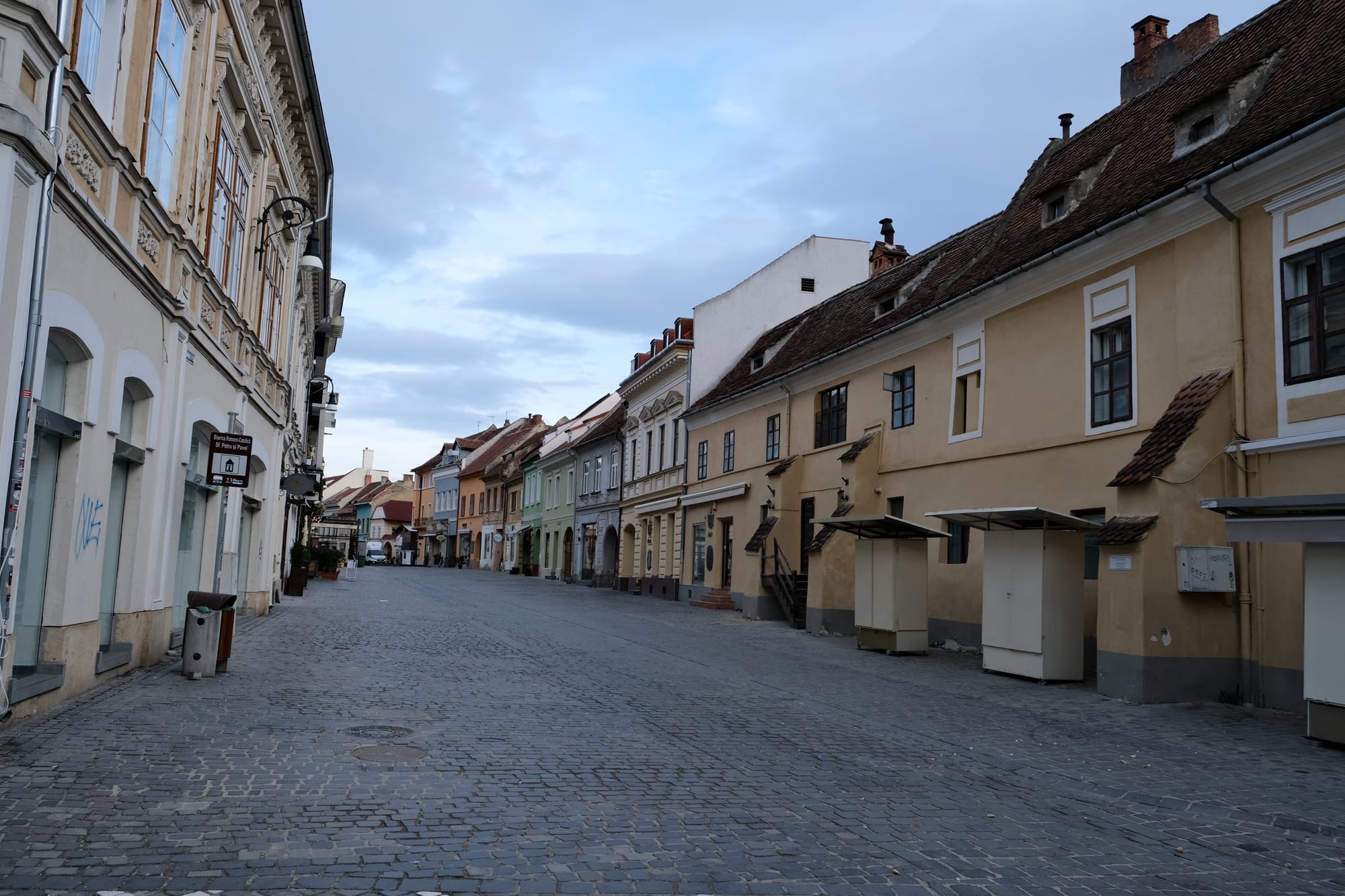
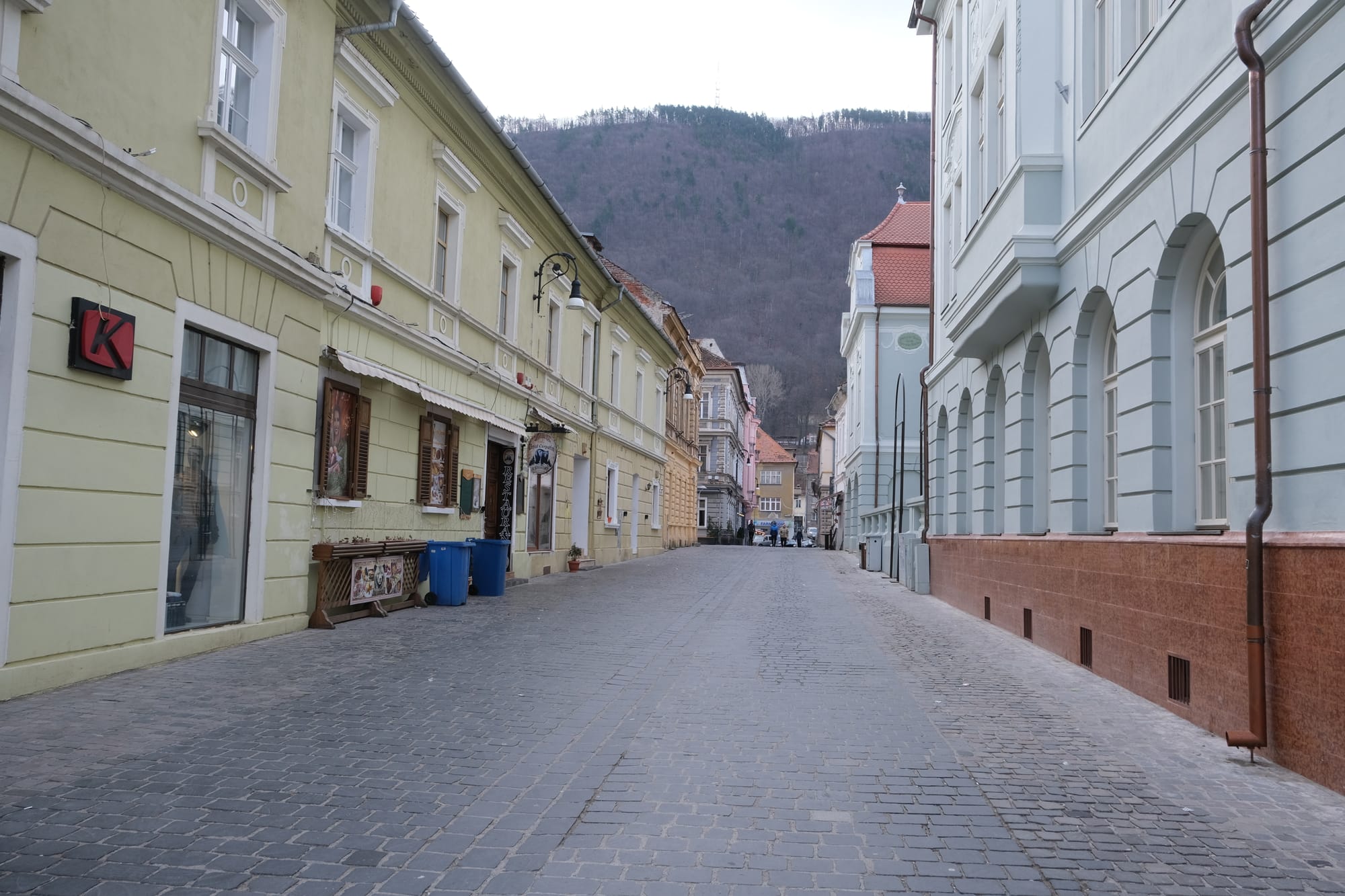
These images show some of the main streets of the old town centre of Brașov (The first image was taken while still standing in the Council Square). Normally these streets would be teaming with people, but I woke up early one morning to take these pictures when the streets would be clear.
I walked along these streets almost every day while staying here. I loved it, it was such a beautiful place to walk through and I felt blessed every time.
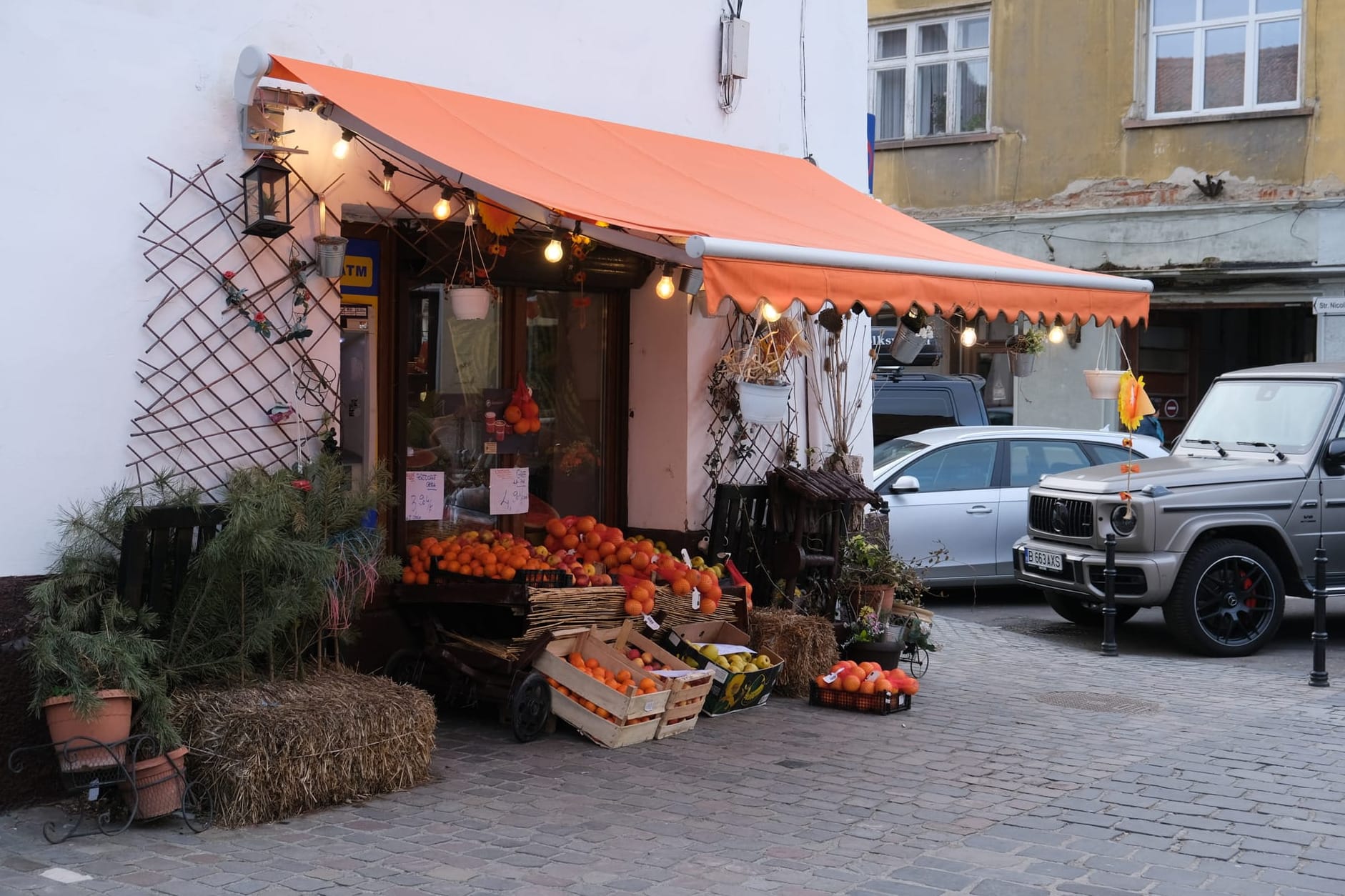
I had to share a picture of this really cute grocery store. It is situated on the corner of my block, so I walked past this store every time I went into the old town centre. I stopped a few times to buy fruit here. I loved how picturesque the place looks with its orange canopy, overflowing fruit baskets and vegetation, and its adorable lighting.
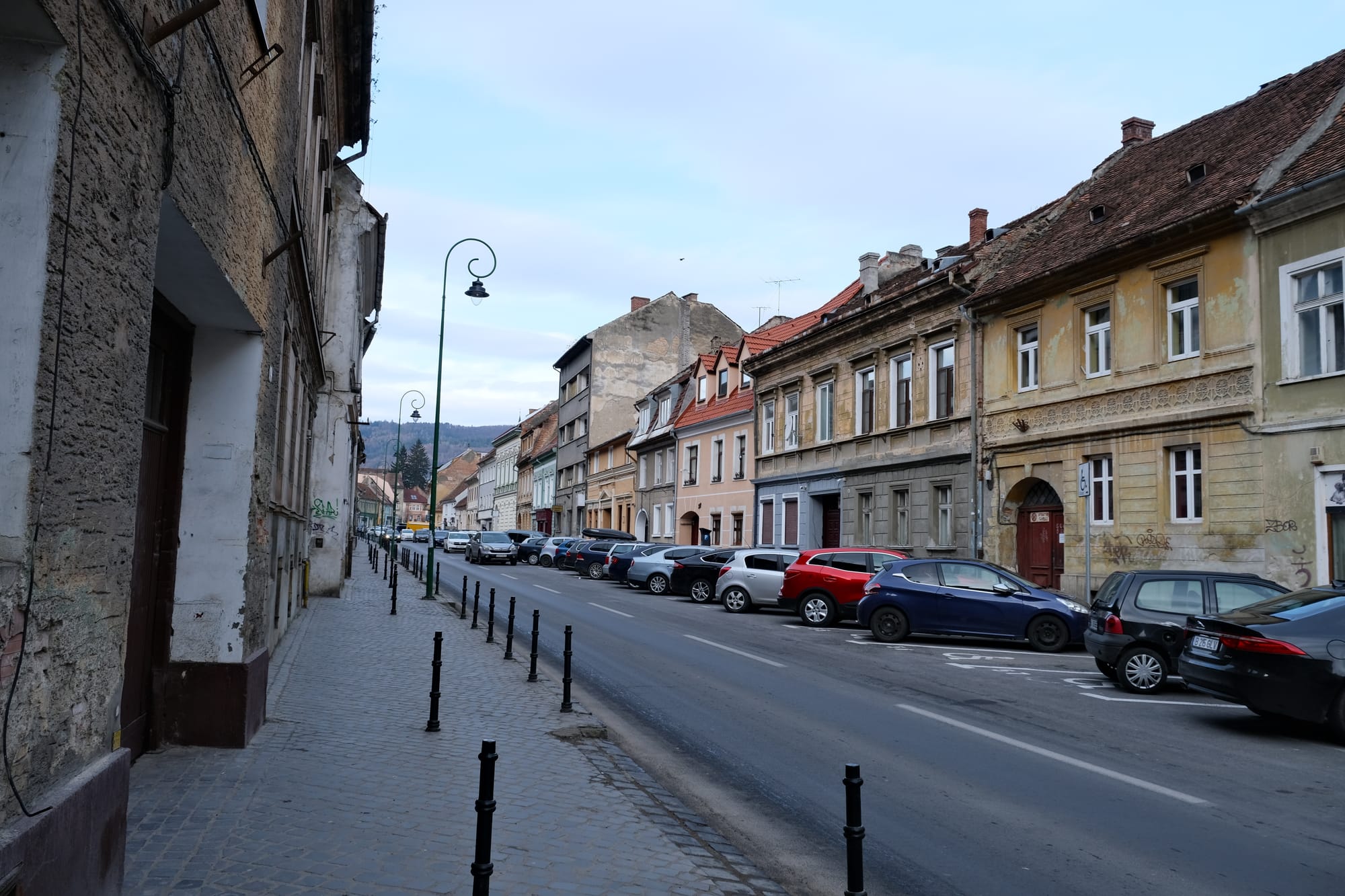
This was my street. It was the first street from the town centre with dedicated car traffic. Everything else that was closer was generally pedestrian only access.
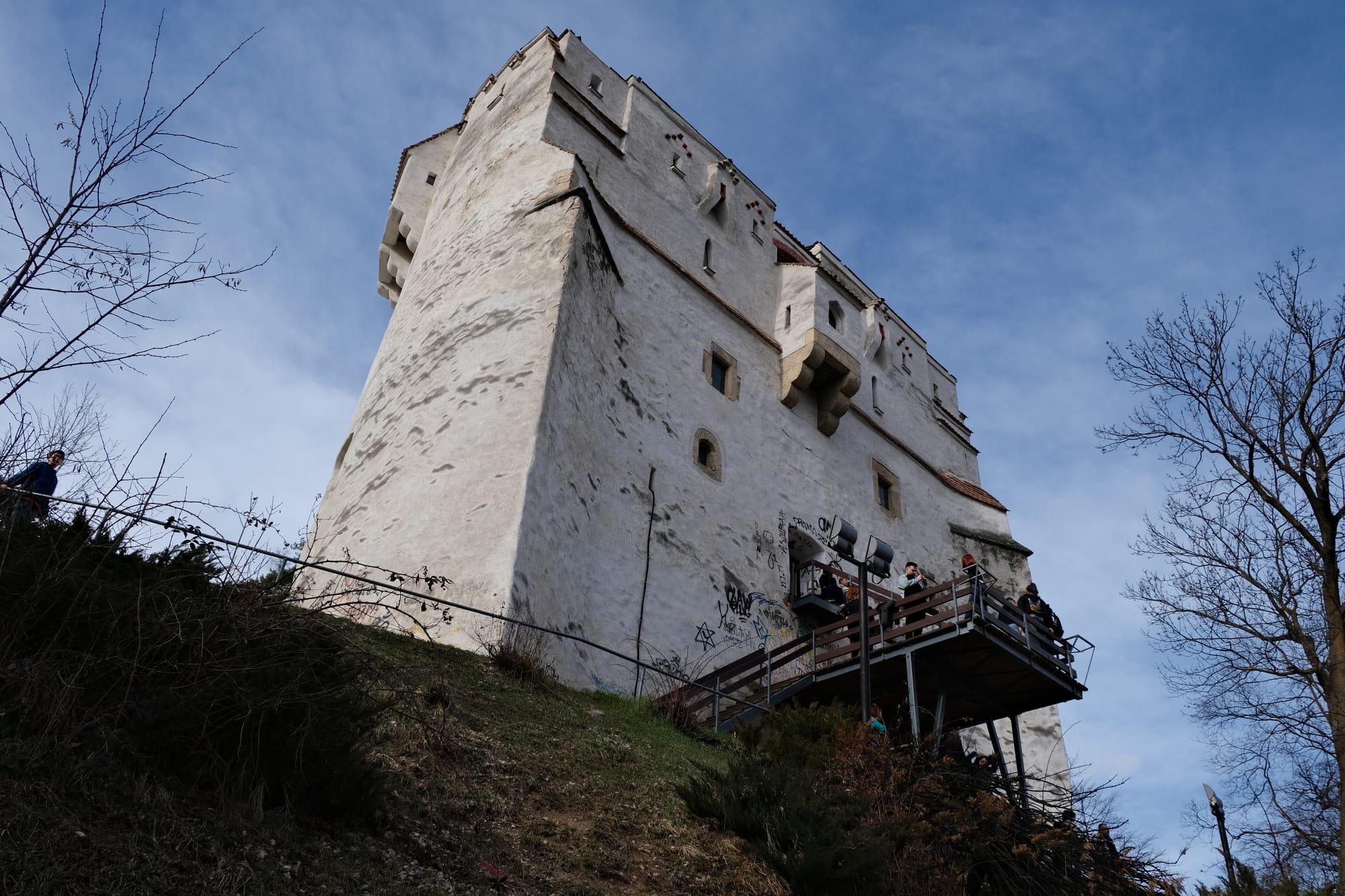
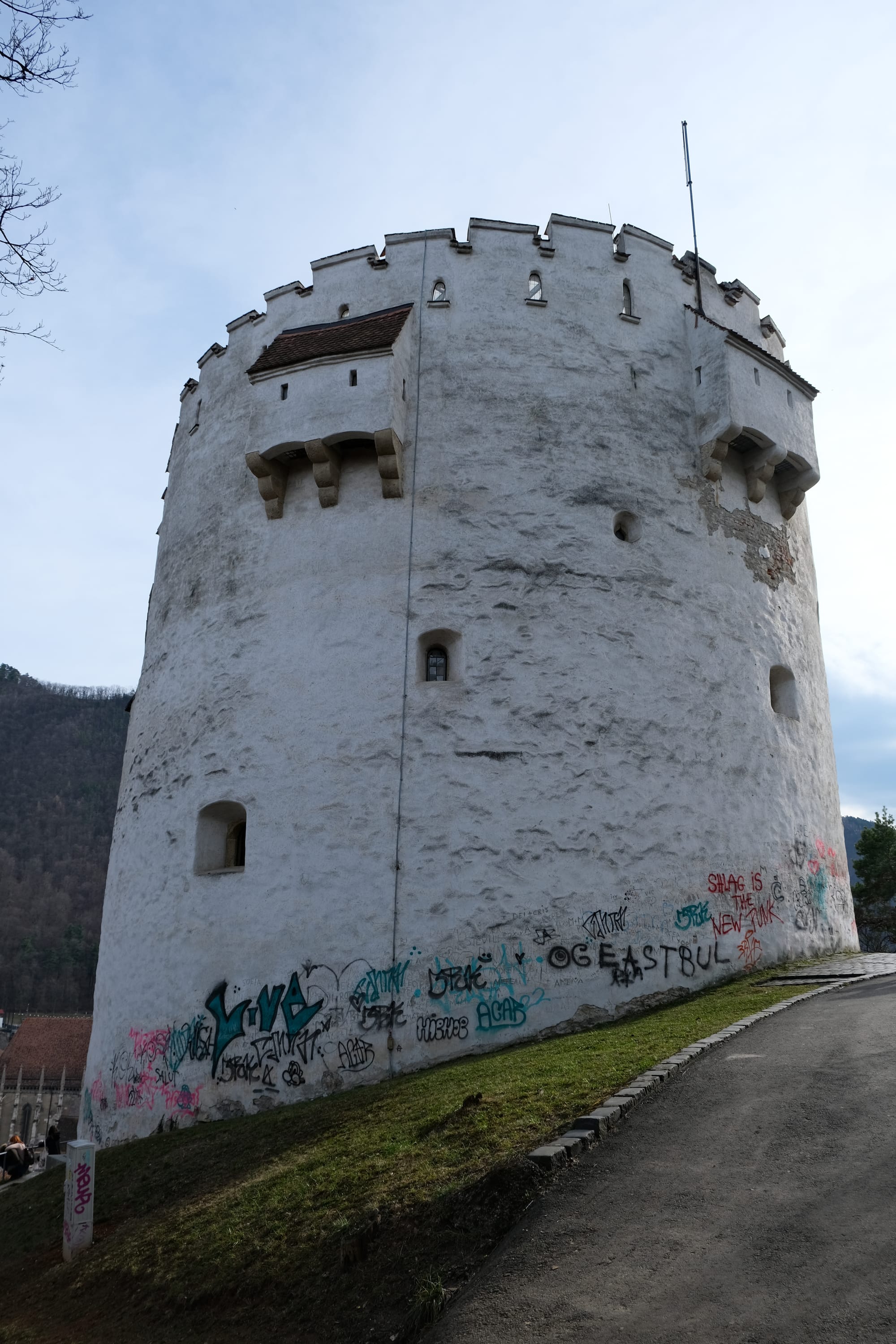
This is the White Tower. It is semicircular in shape, so from one side it looks like a squat square building, and from another it looks like a proper round tower. This tower was originally constructed during the medieval period as part of the cities defensive strategy. Unlike Sighișoara, Brașov was situated in a valley, with hills all around. The old medieval citadel had a wall around it, but fortified towers, like this one, were built on the hills next to it to help protect it; preventing any attacking force from using those hills to gain an advantage over the city.

From the white tower I had a good view of the old town and Tâmpa mountain, that's the big mountain with the sign 'Brașov' at the top. Here you can see both the Town Hall and the Black Church. My place was situated on the other side of the old town. Tâmpa mountain was the hiking area I mentioned previously that was really close to where I was staying, and I went there many times.
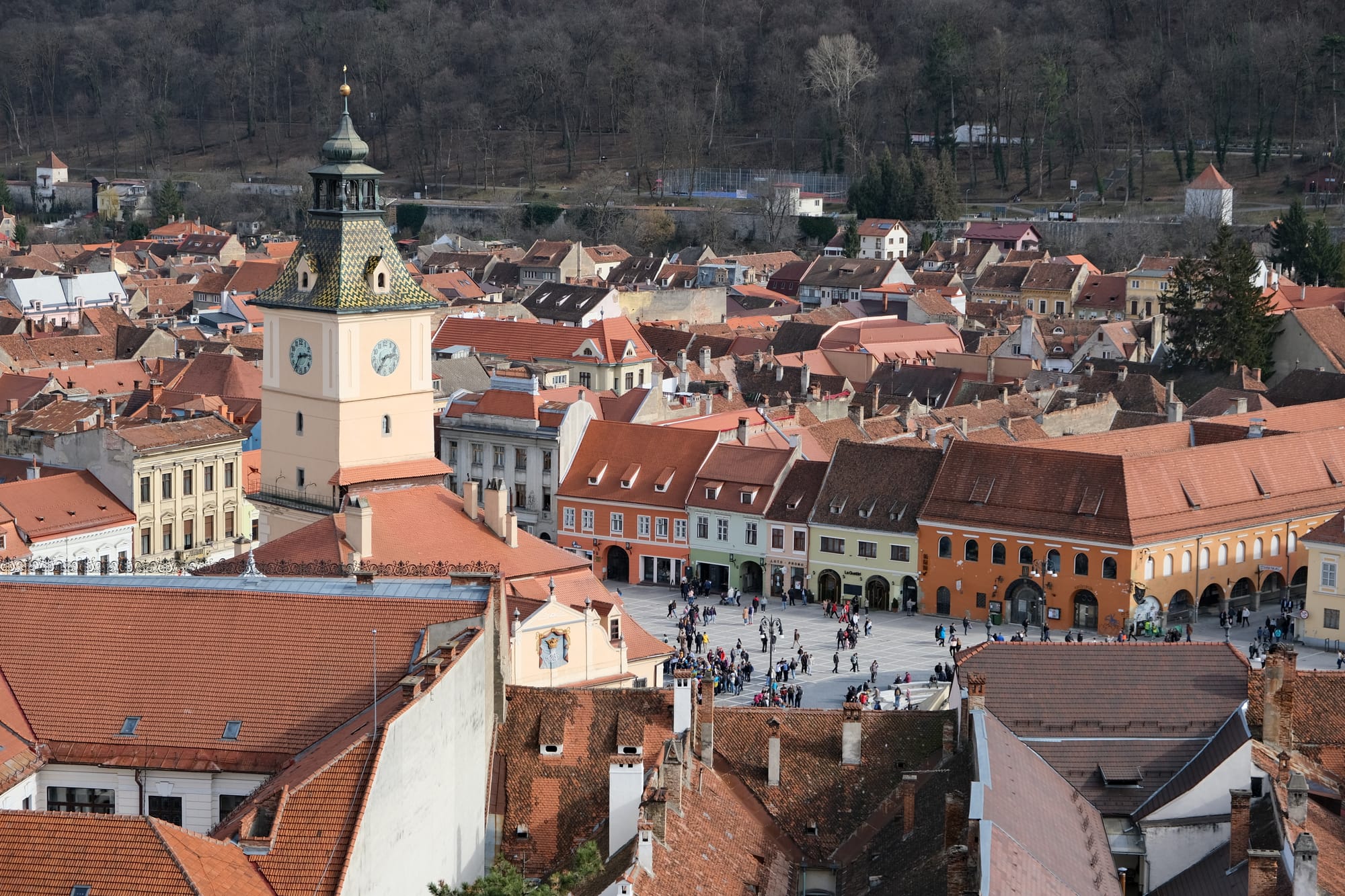
A close up of the Council Square, taken from the White Tower.
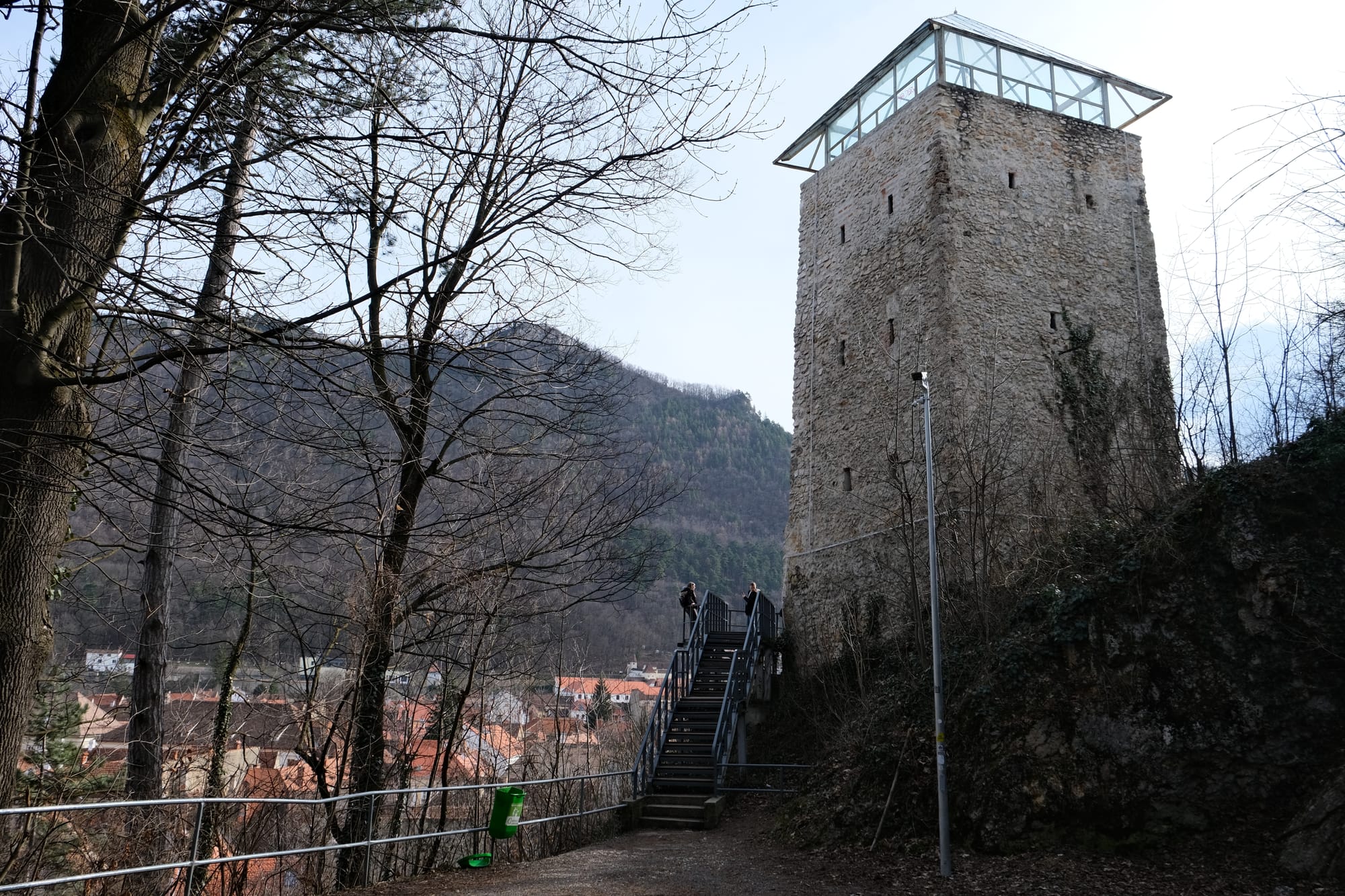
And a White Tower would not be complete without a Black Tower. They really did like naming things after the colours black and white. Like the White Tower, this tower was also built in the middle ages as part of the cities defensive strategy.
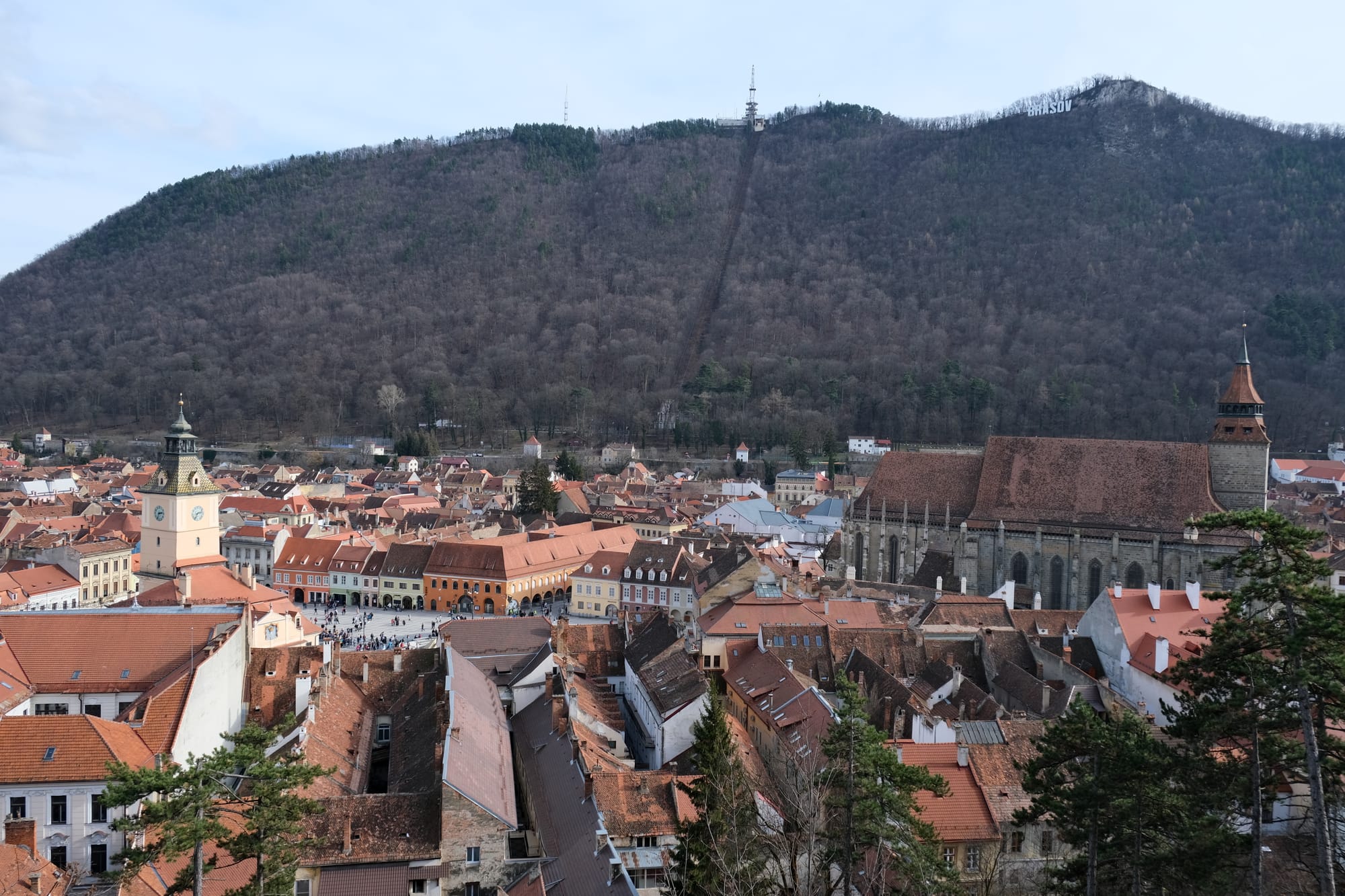
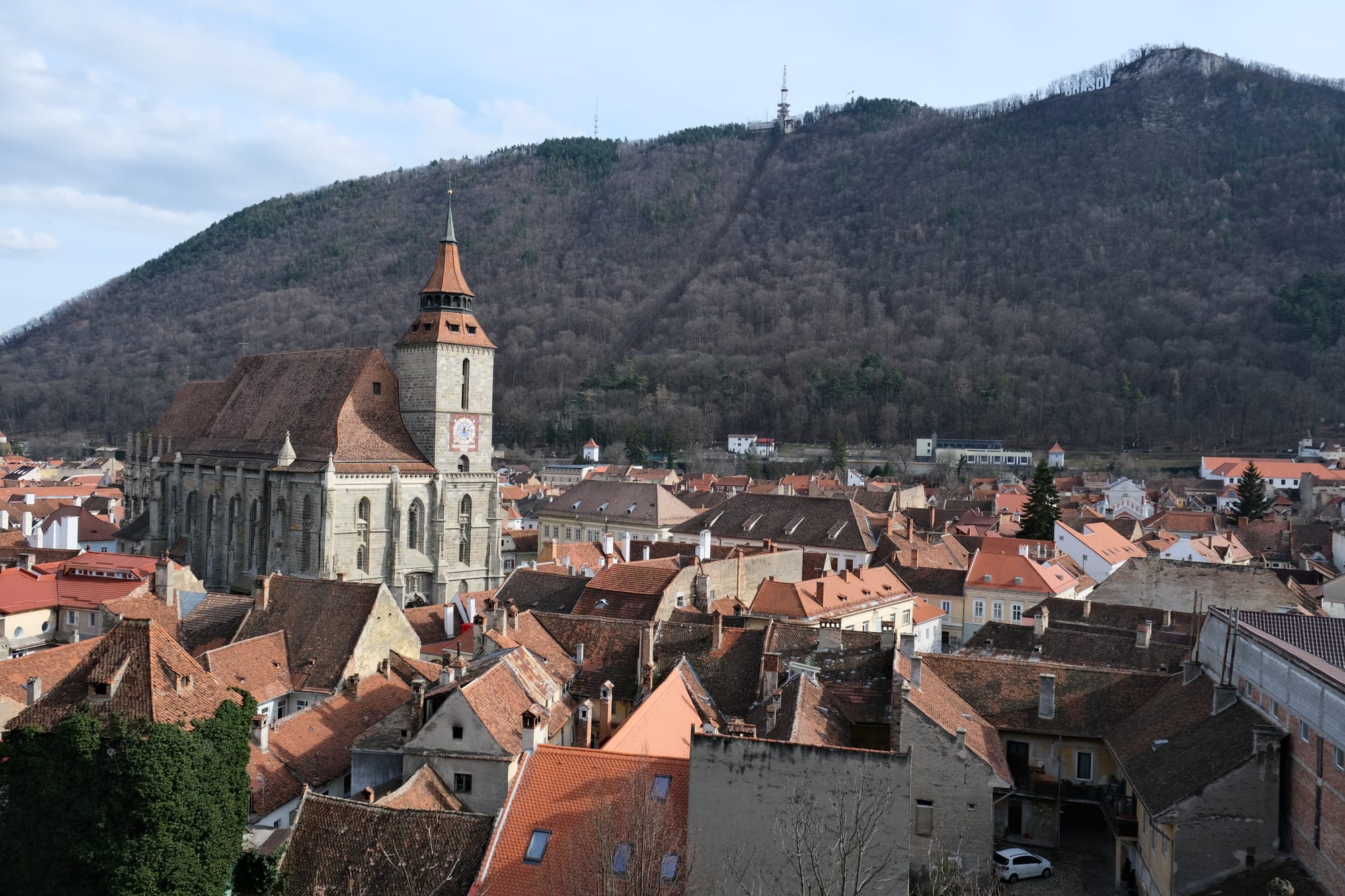
I wanted to share these two pictures together. Both look over the old town towards Tâmpa and have a similar framing and elevation. The key difference is that the first image was taken from the White Tower, and the second from the Black Tower.
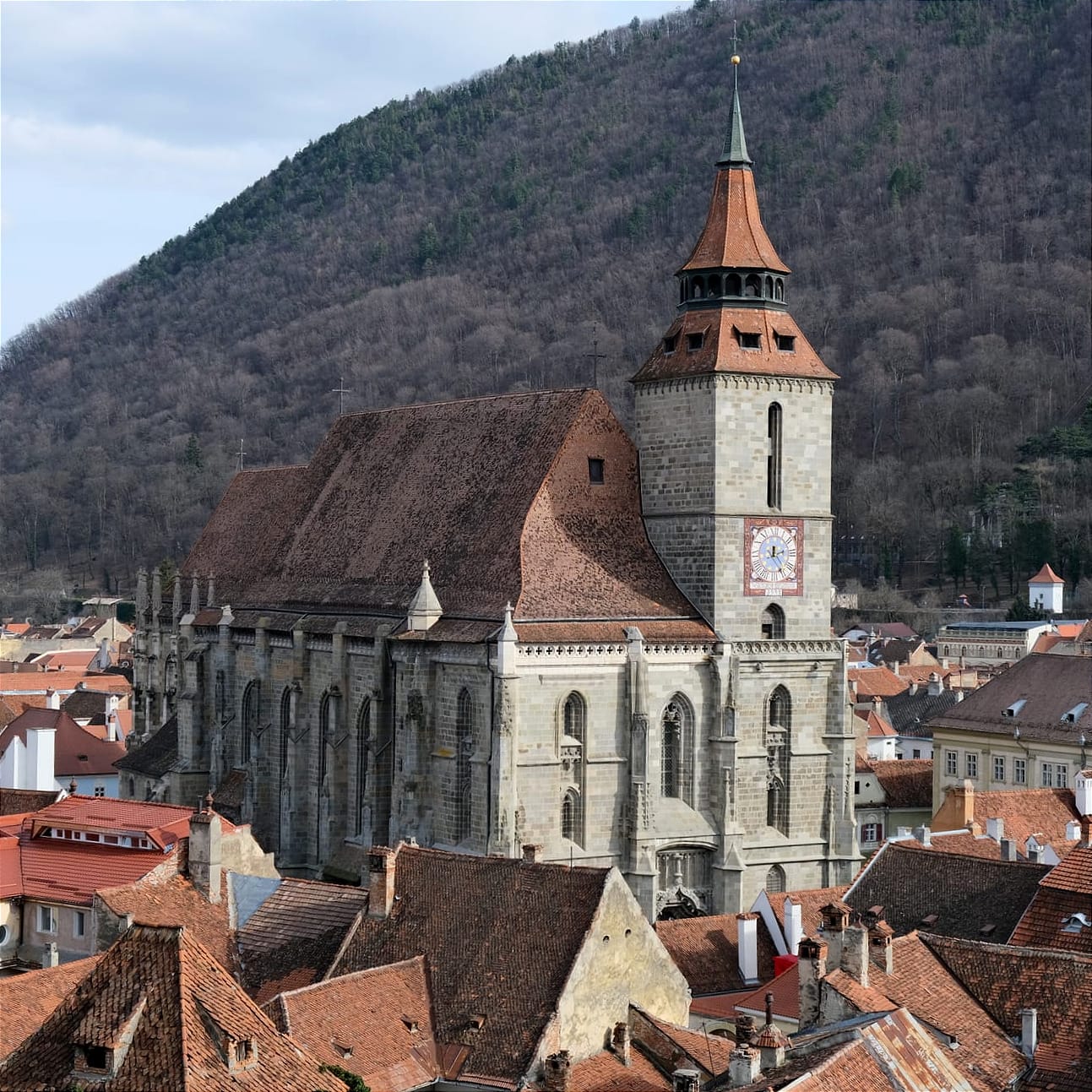
A close up of the Black Church, taken from the Black Tower.
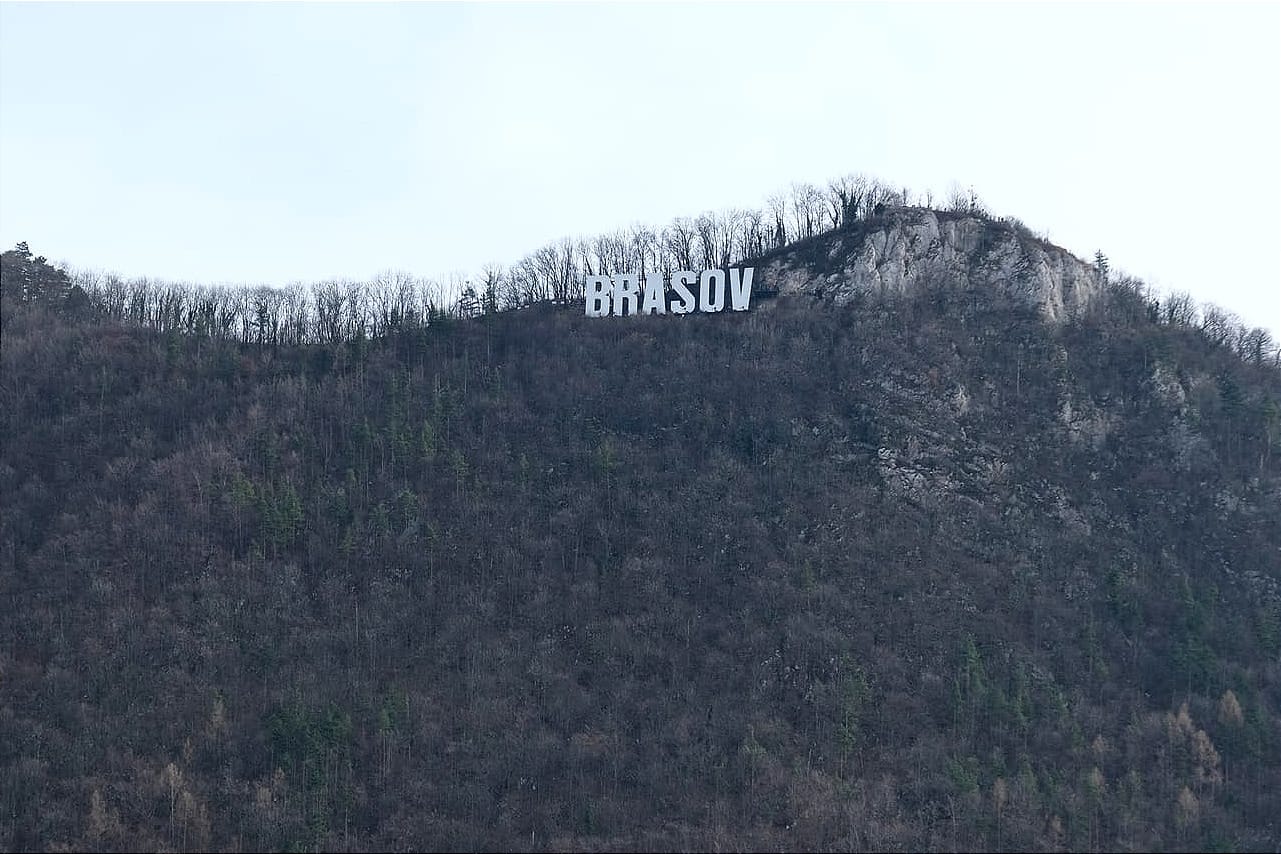
A close up of the Brasov Sign, taken from the White Tower.

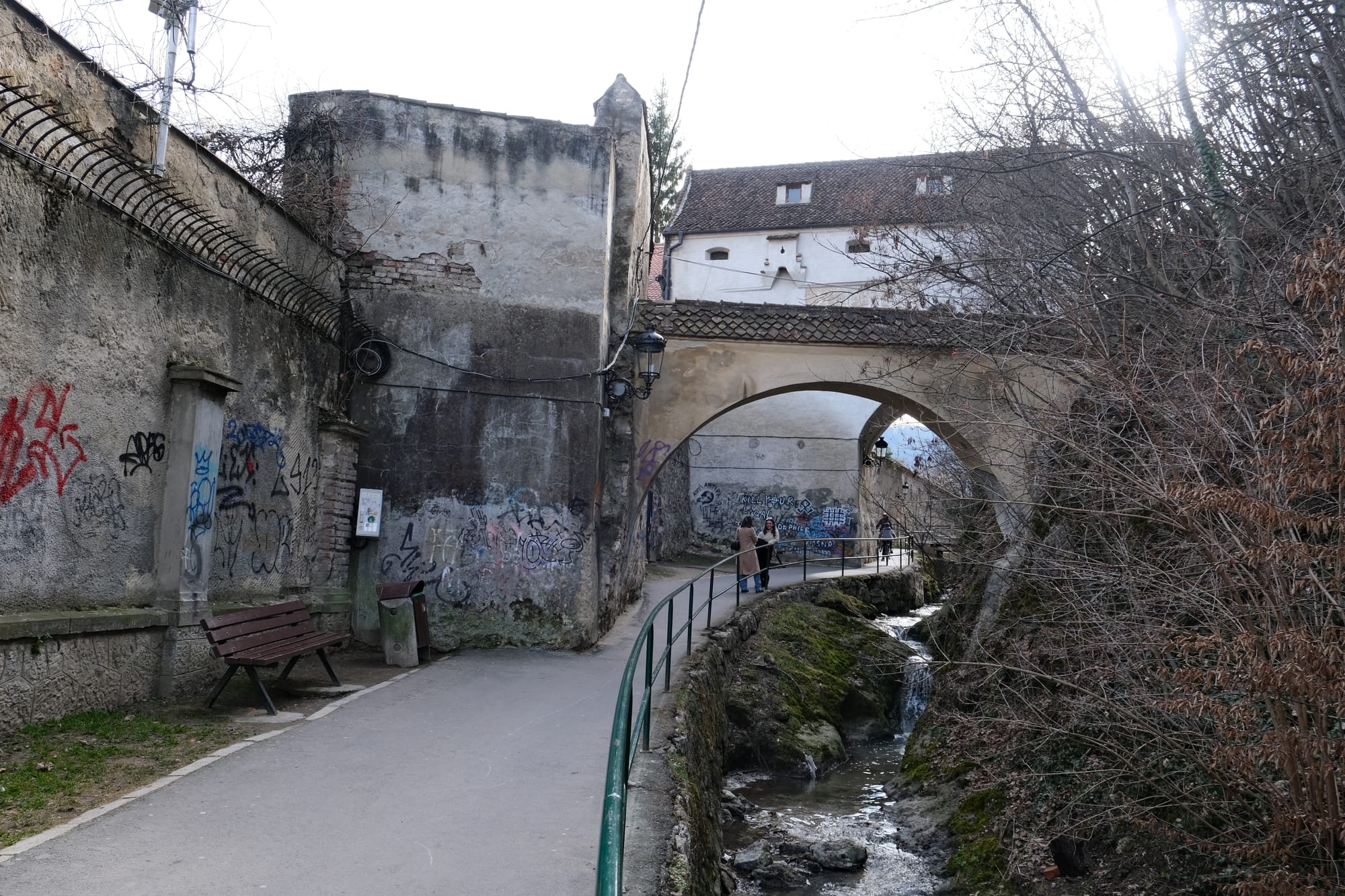
This path was situated between the old town and the two towers mentioned previously. I believe this would have been where the original defensive wall was located, and some of these walls may still be from the medieval period. I really liked this path as it had a tranquil sense to it, located just outside the busy city with a babbling brook running past.
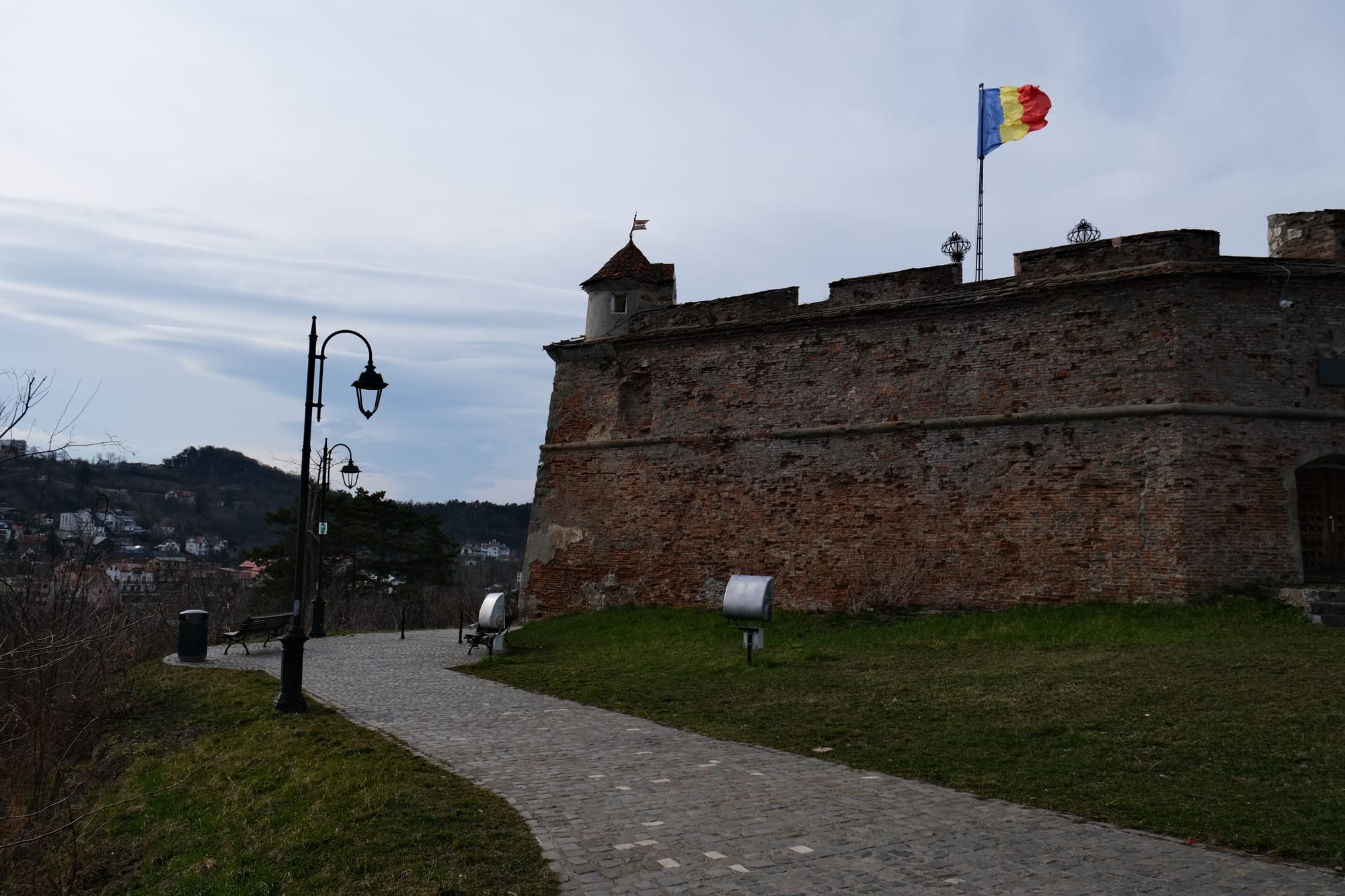

This is the Fortress-on-Straja. Like the other towers, it was built for the defenses of Brașov I only came here once, as it is situated a bit further from the old town, but I could quickly see why a fortress was built on this hill. From here, I could see the old Brașov town centre, but also the entire valley on the other side of the hill. This place would provide an invaluable vantage point to watch for enemy attacks.
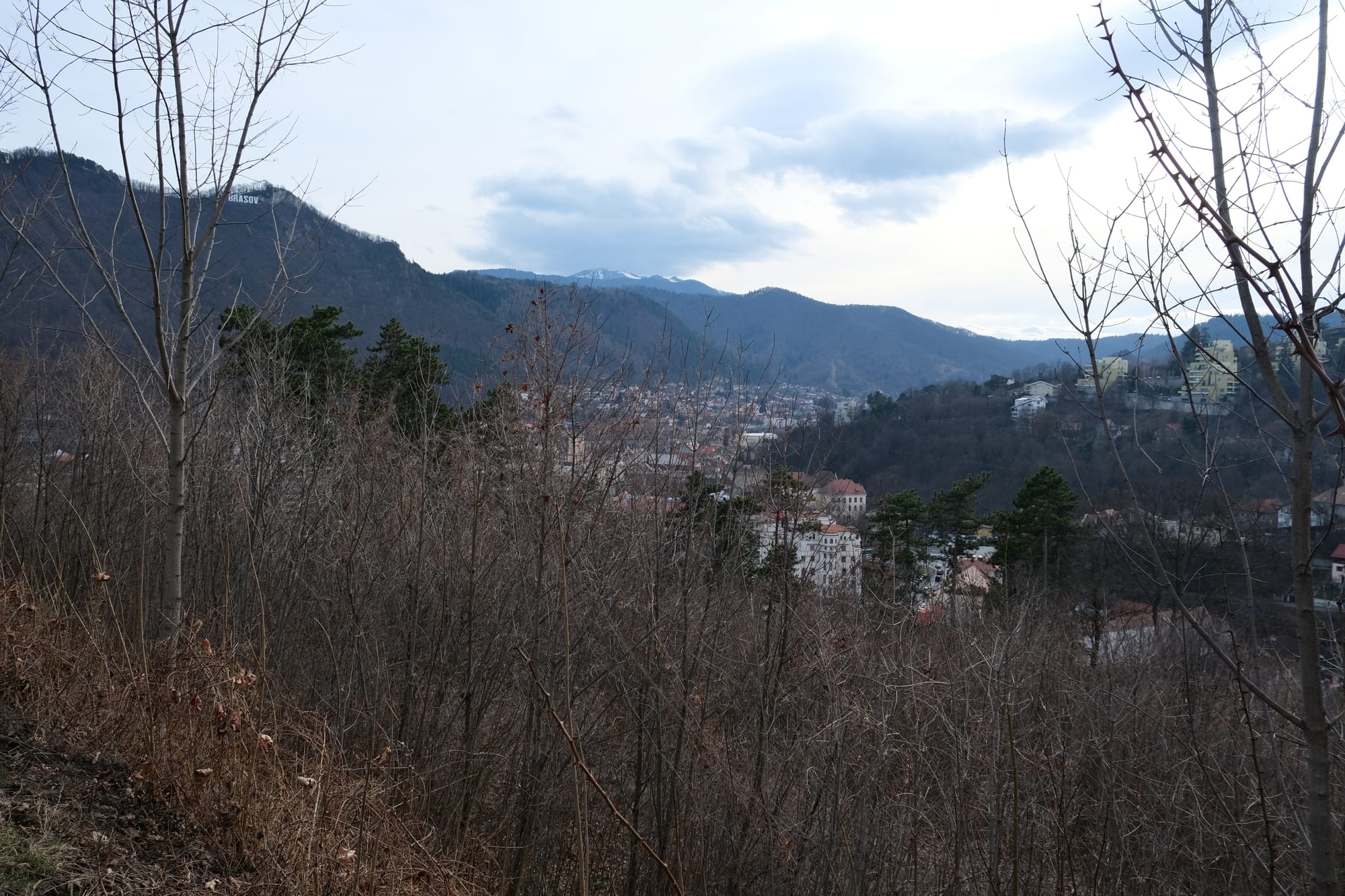
Here is the view of Brașov from the Fortress-on-Straja. Unfortunately the fortress was closed so I couldn't go inside to explore or see the view from the top of the walls. The view from the ground was obscured by the low lying vegetation.
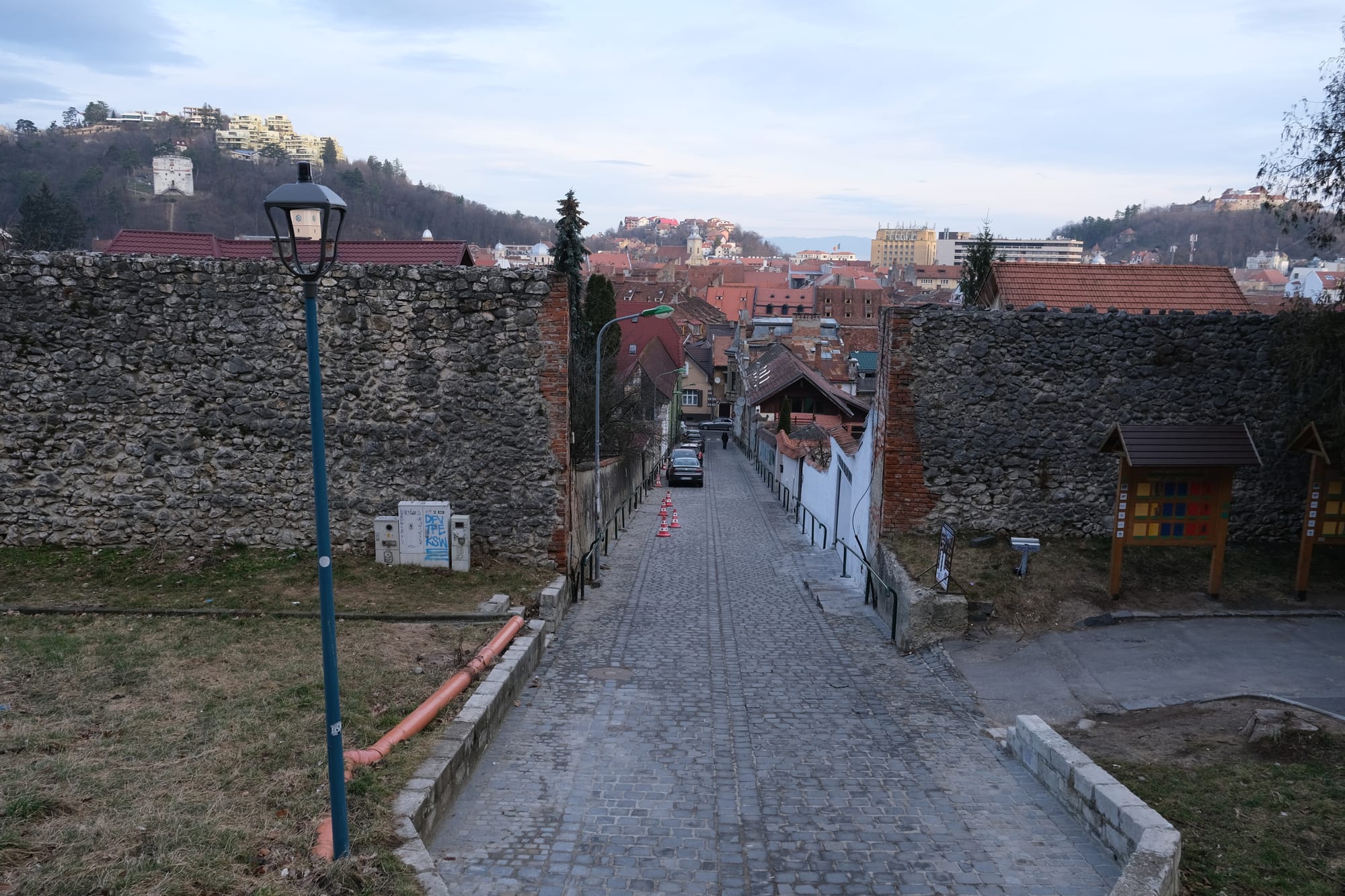
Returning back towards Tâmpa, here is the main access road out of the city to get to the park. You can see where the old wall of the city was. In the background on the left you can see the White Tower, and on the right, behind some leaves, you can see the Fortress-on-Straja.

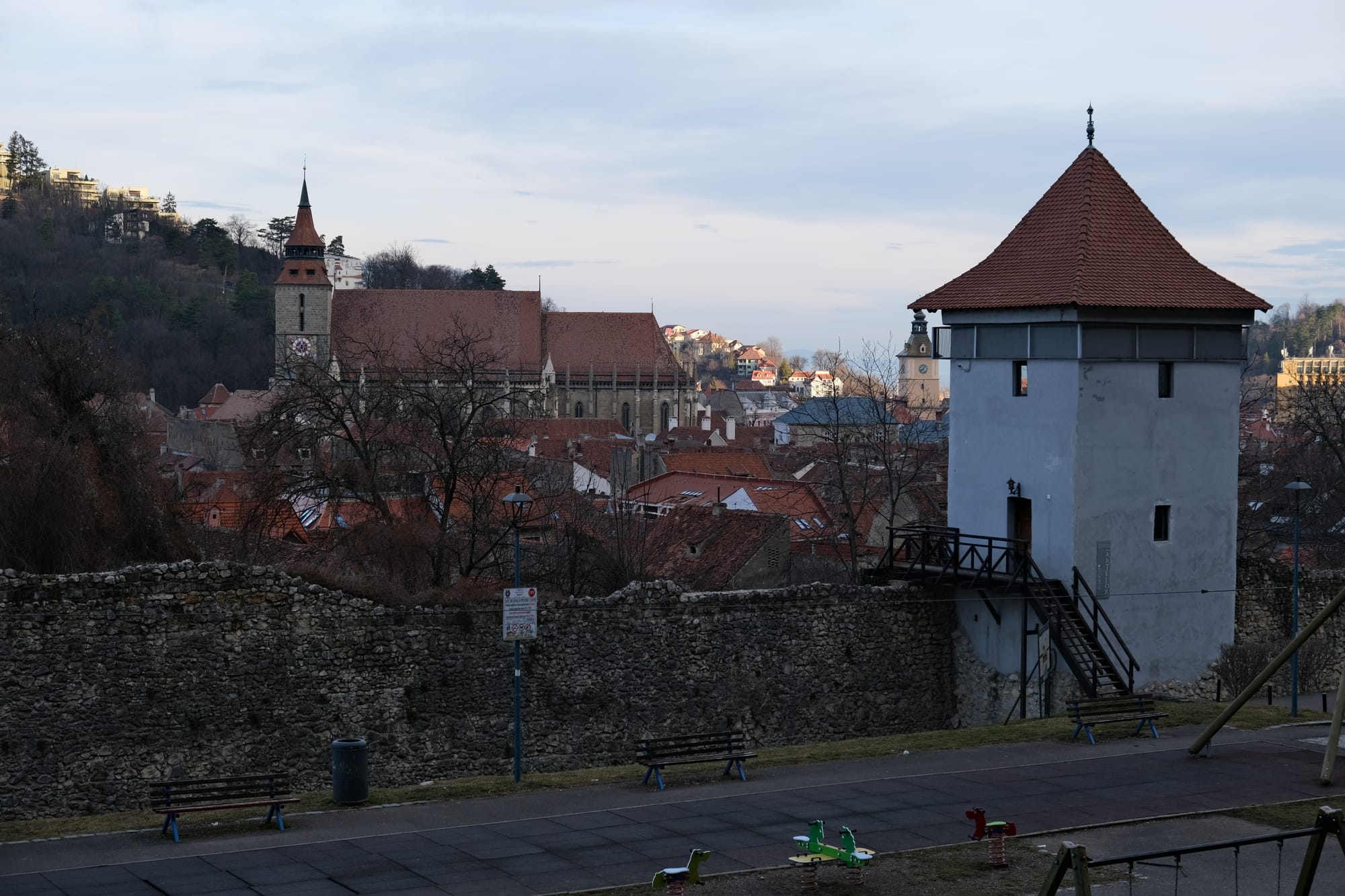
Right at the foot of Tâmpa, outside the old city walls, was something like a public recreation area. There were many playgrounds for children, along with gym equipment and some tennis courts.
Something I really liked about Brașov is that they seemed to be making an effort to preserve the history of the city. These sections of the wall had multiple towers and I believe, like the other medieval defensive towers shown, they have been restored and maintained fairly recently. I thought it was awesome and added an extra charm to the historic centre of the city. Staying in Brașov, I always treasured the moments when I came across another old piece of history during my explorations.
From this area, there were several paths that could be taken to go Tâmpa mountain, and all of them were steep.
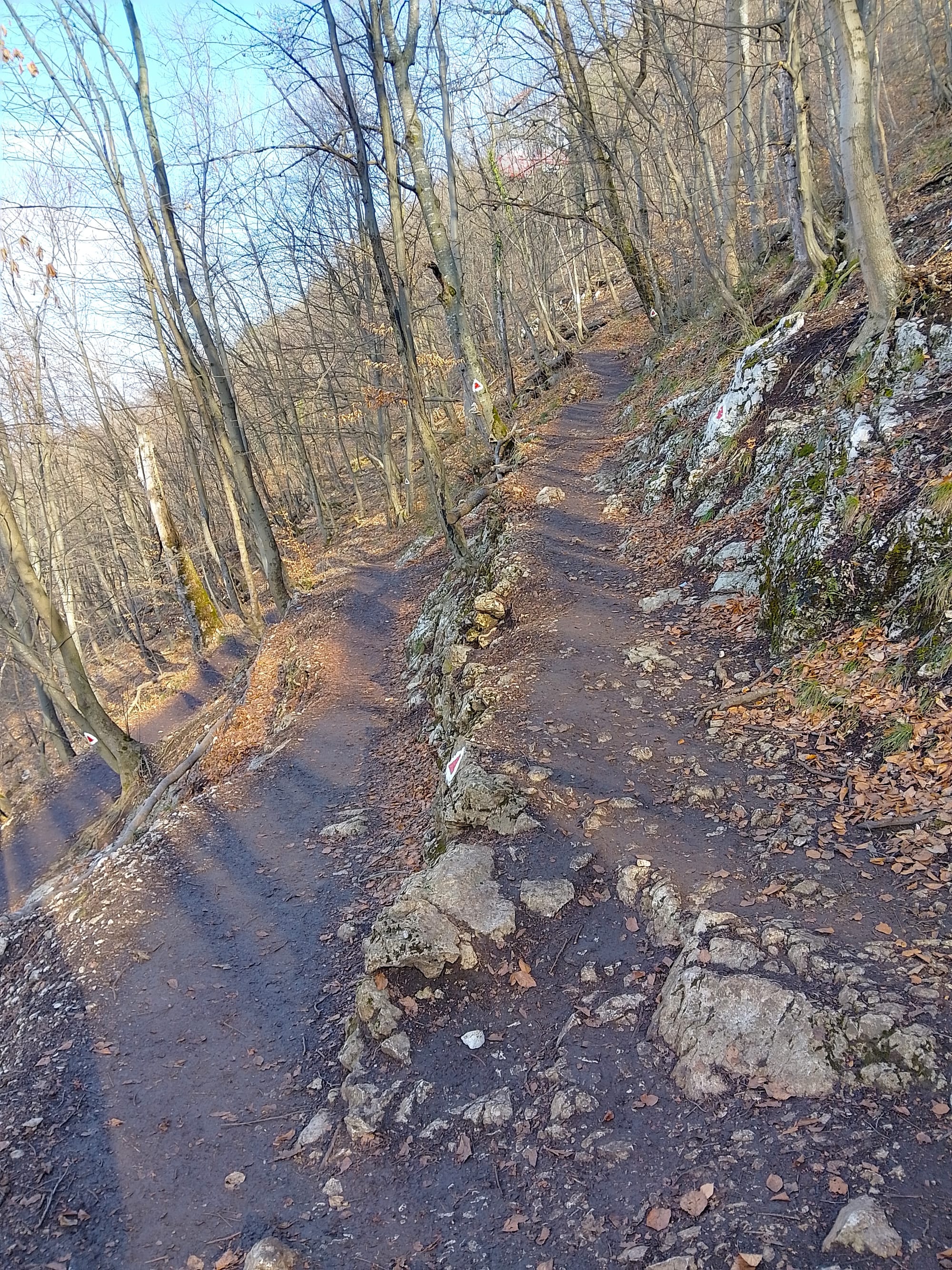
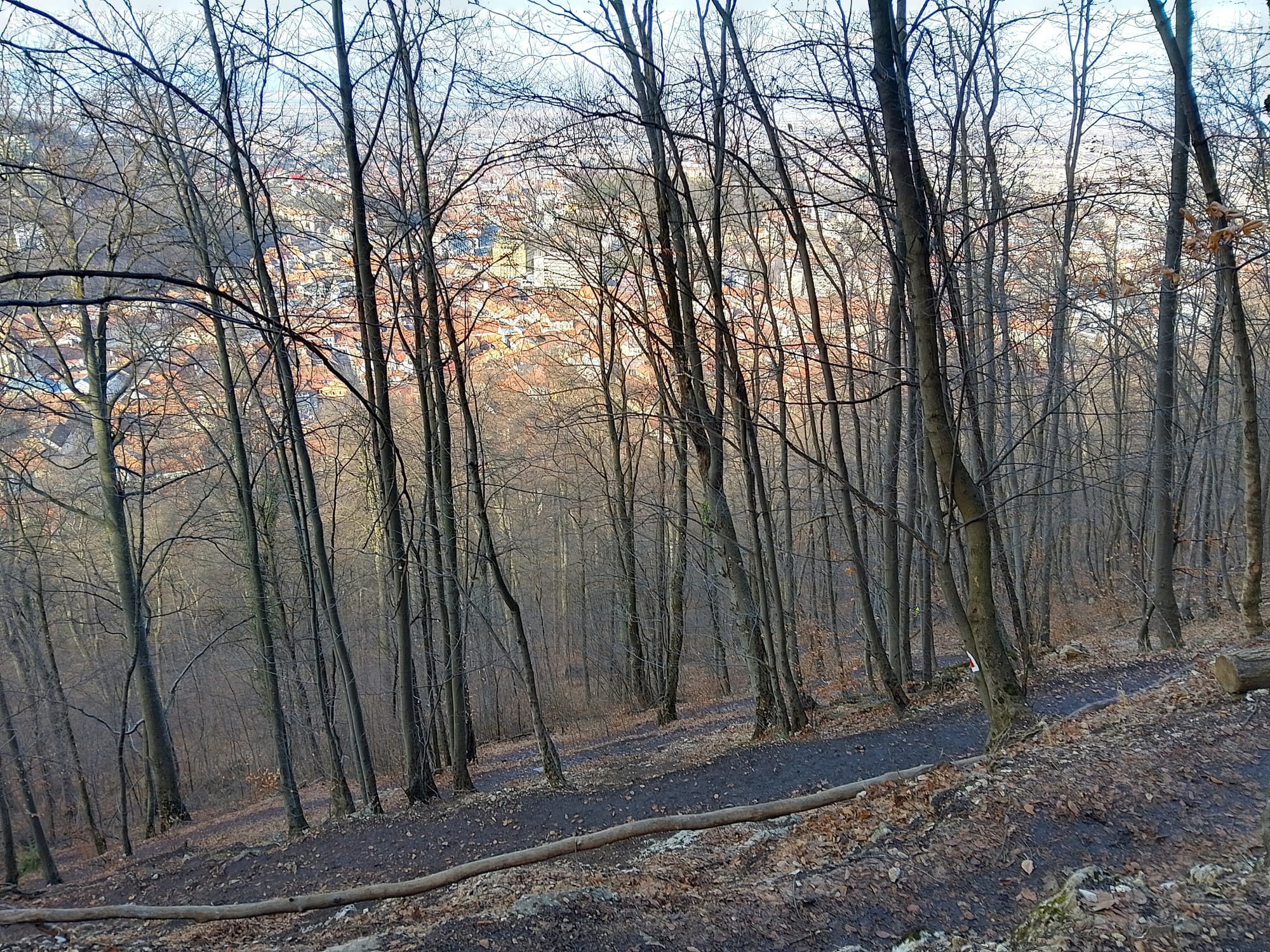
As you may have noticed from some of the previous pictures, Tâmpa was a steep mountain. The path pictured above is perhaps the steepest, going directly up the side of the mountain by zig-zagging across the slope. In the second image, each band of black you see, looking down the slope, is all part of the same path. It took me two attempts before I finally made it to the top, but it was most definitely worth it.
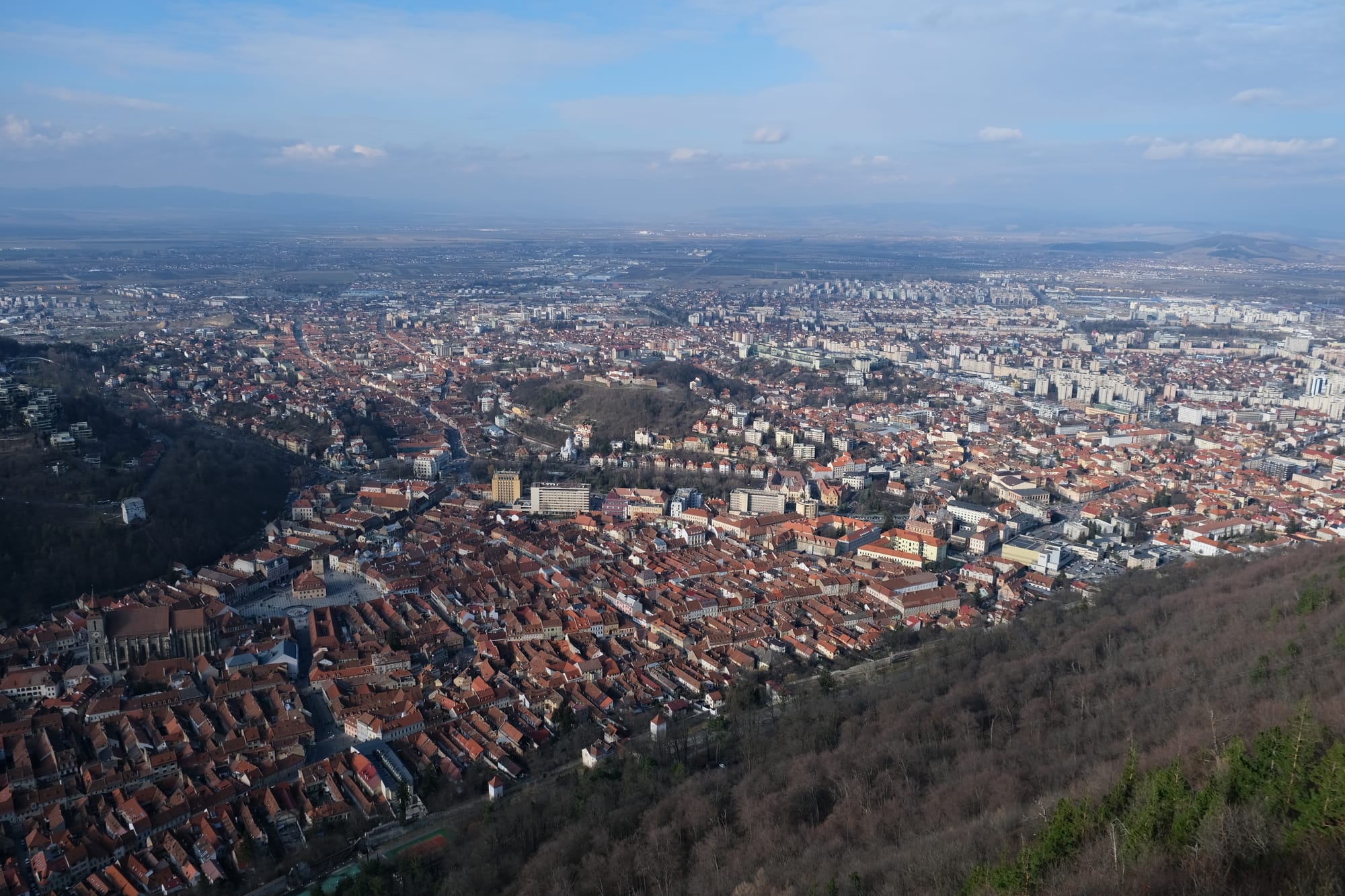
I took this photograph from the lookout right next to the Brașov sign. The elevation of the mountain was so high compared to the city belowrom here I had such a good view over Brașov. In this image you can see all the orange roofed buildings of the old town, nestled between the hills, making almost a triangular shape. Beyond the old town, you can see how the city expanded into the plain beyond with much more modern looking buildings.
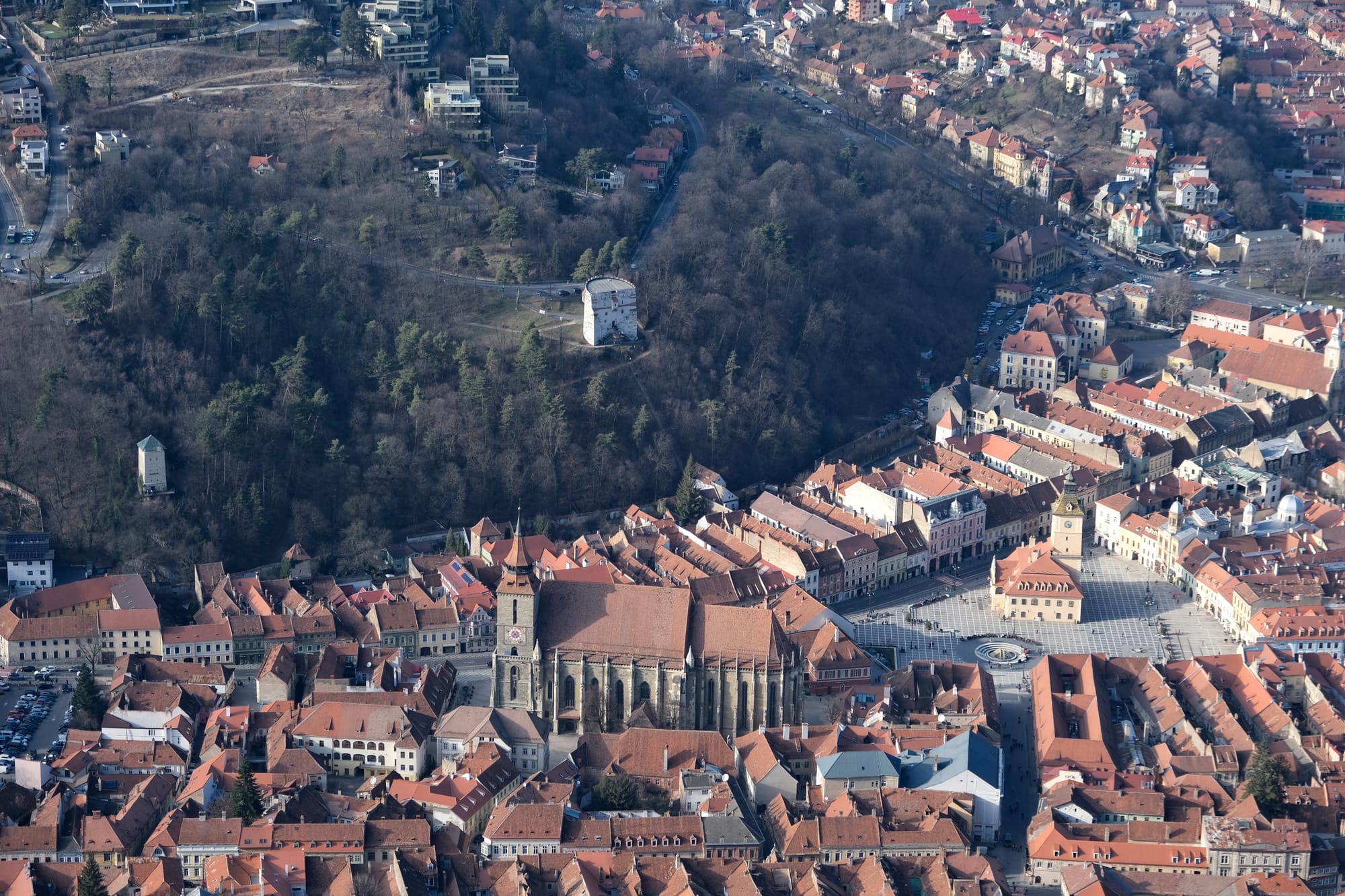
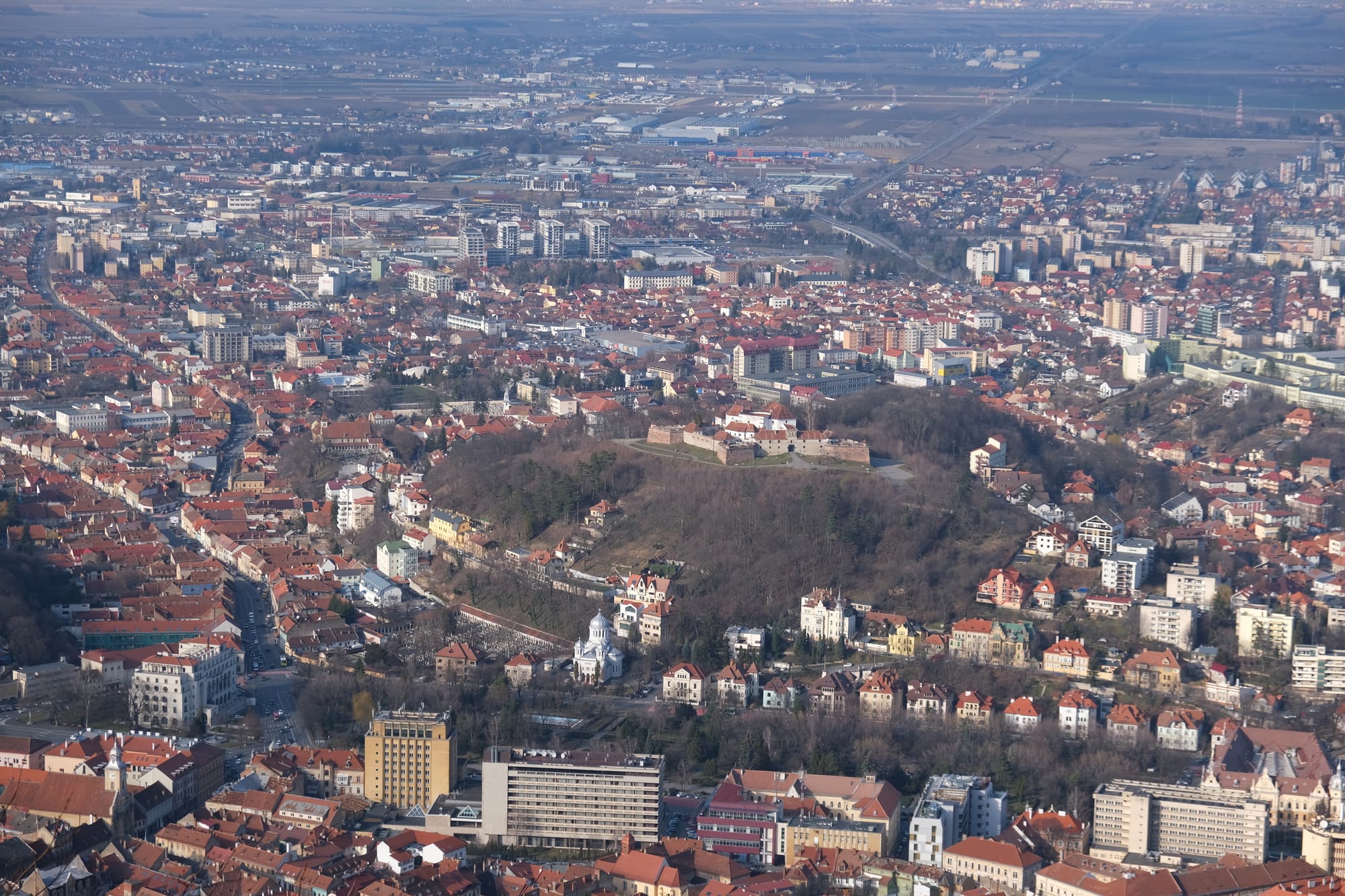
Here are some close up of some of the locations previously featured in the post. The left (first) image shows the Black Tower, White Tower, Black Church, and Council Square, the right (second) image shows the Fortress-on-Straja.
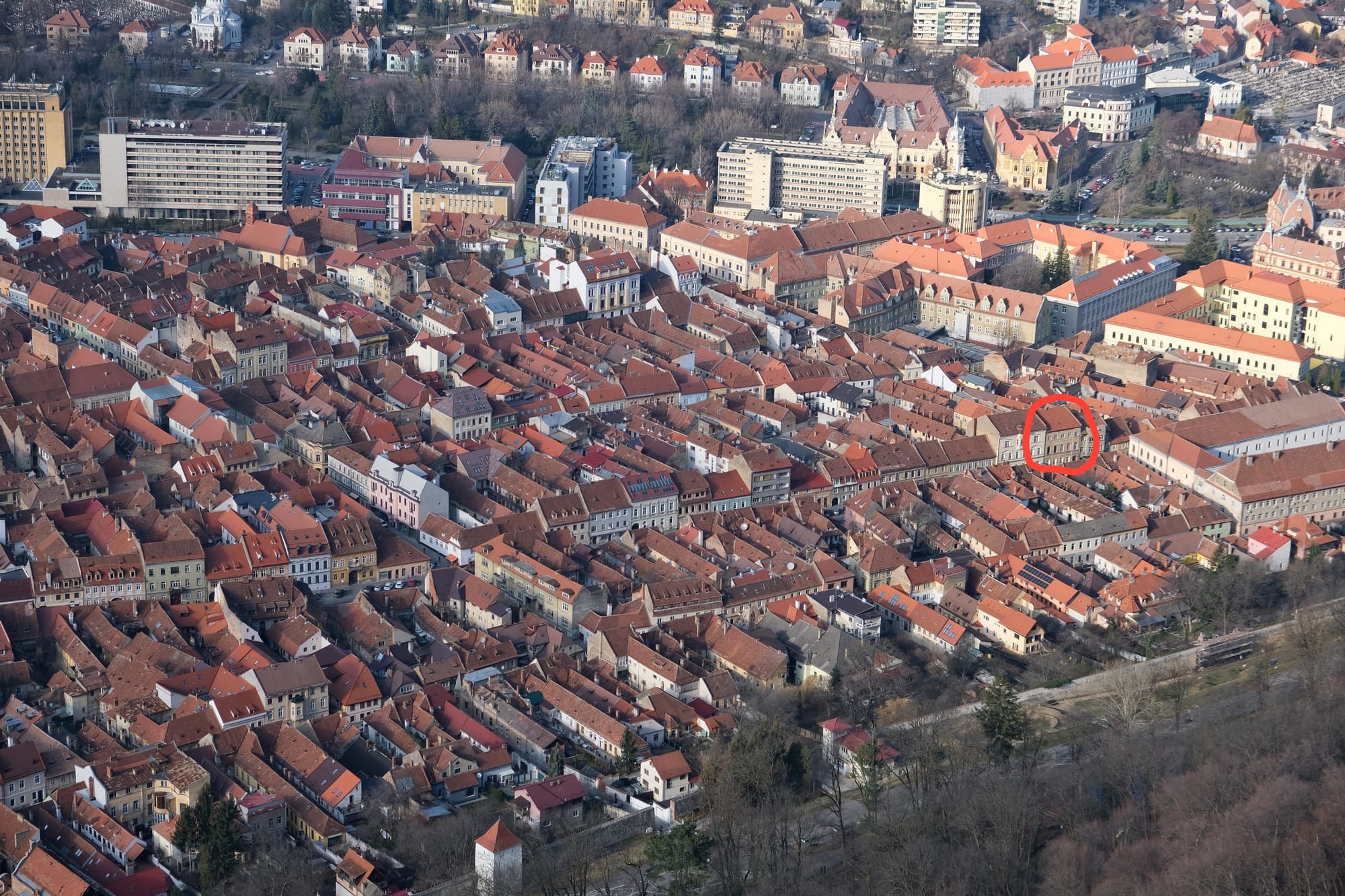
I could even see my accommodation.
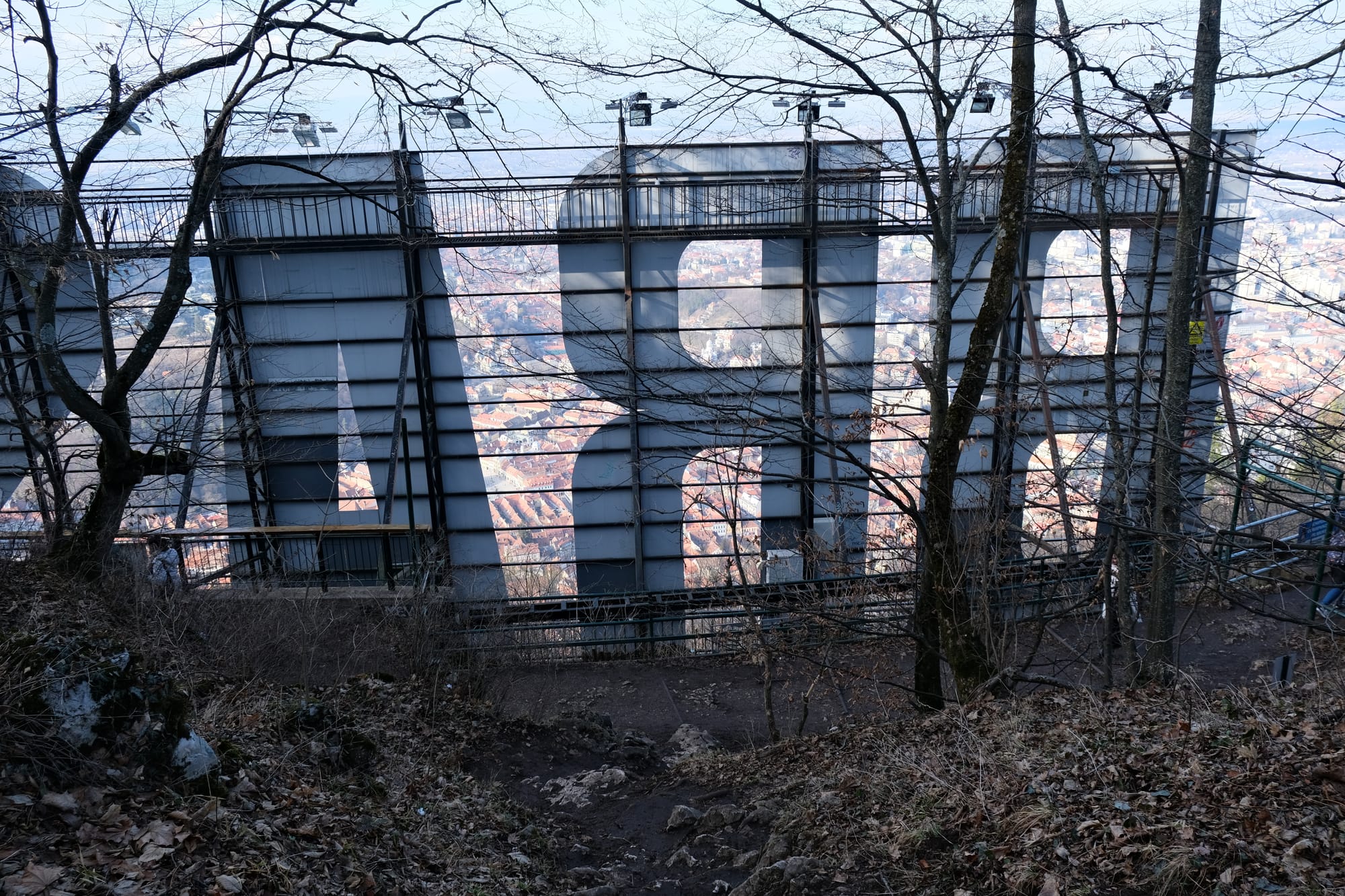
The back of the Brașov sign. Because of how steep the slope is right before the sign, there was no way for me to take a picture of the front when I was up here. What I did find interesting is that the sign lights up at night not because it itself illuminates but because bright lights sign on it and is reflected by the white paint.
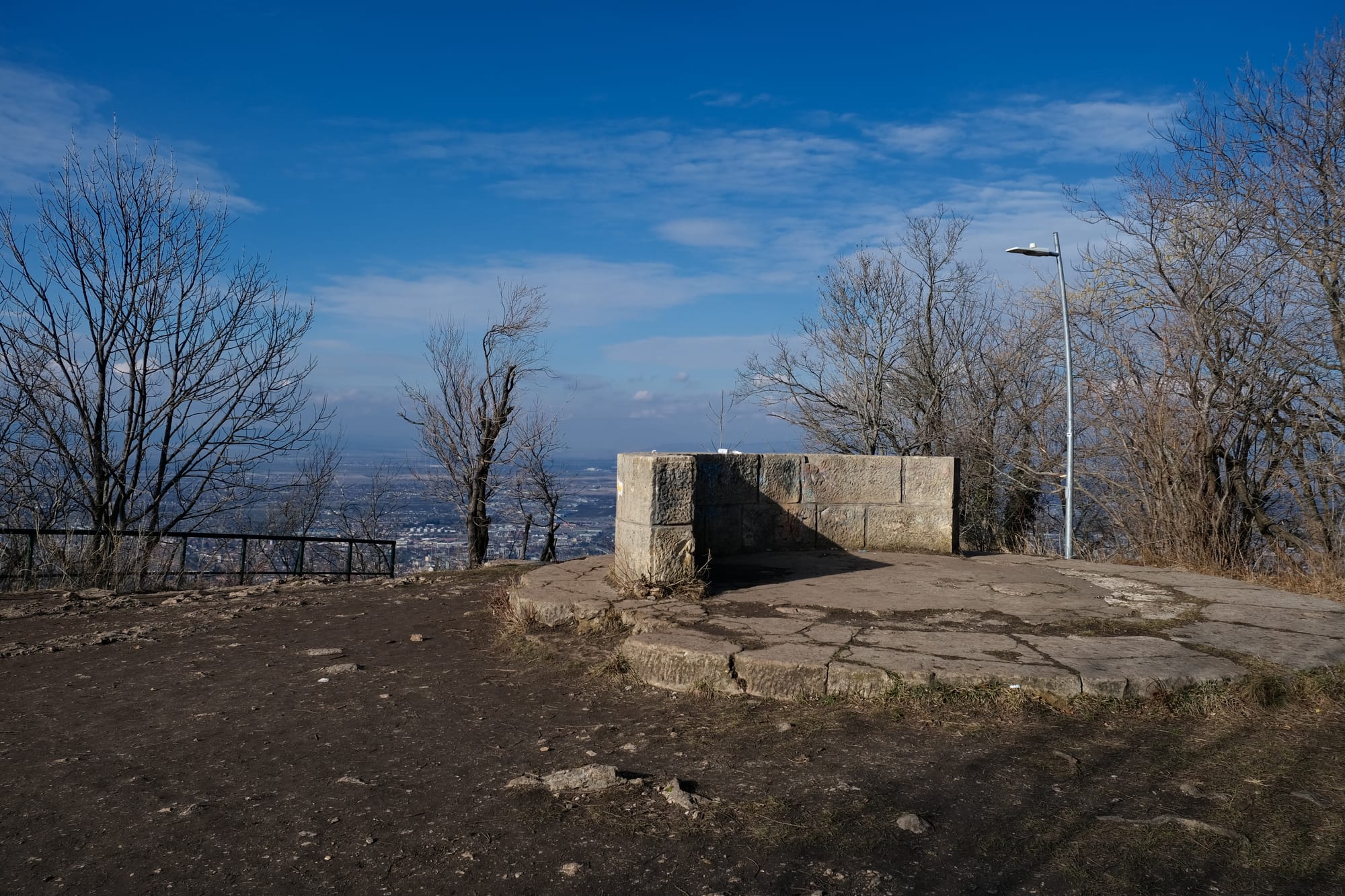
This picture is the top of Tâmpa. I'm including it here mostly as proof that I actually did make it to the top one time. I did a few hikes through this nature area, a couple times I went around the mountain, and a couple times I climbed to the summit. Getting to the top was always the hardest because it was so steep I needed to expend so much energy climbing up. Each time though, I was always glad I did.

One time, I returned down the northern side of the mountain and I had this view into a valley filled with these tall repeating rather sad looking tenement buildings.
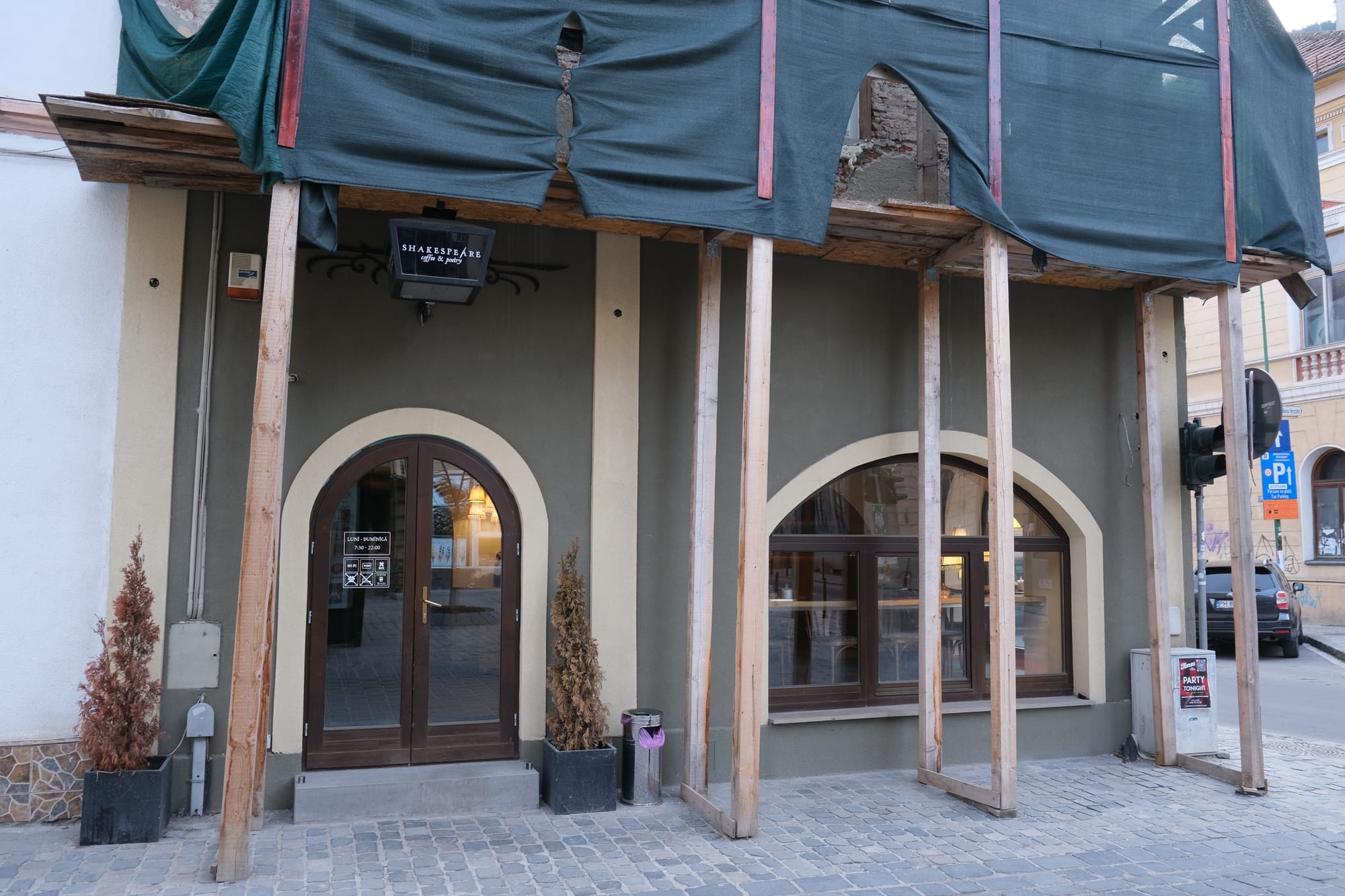

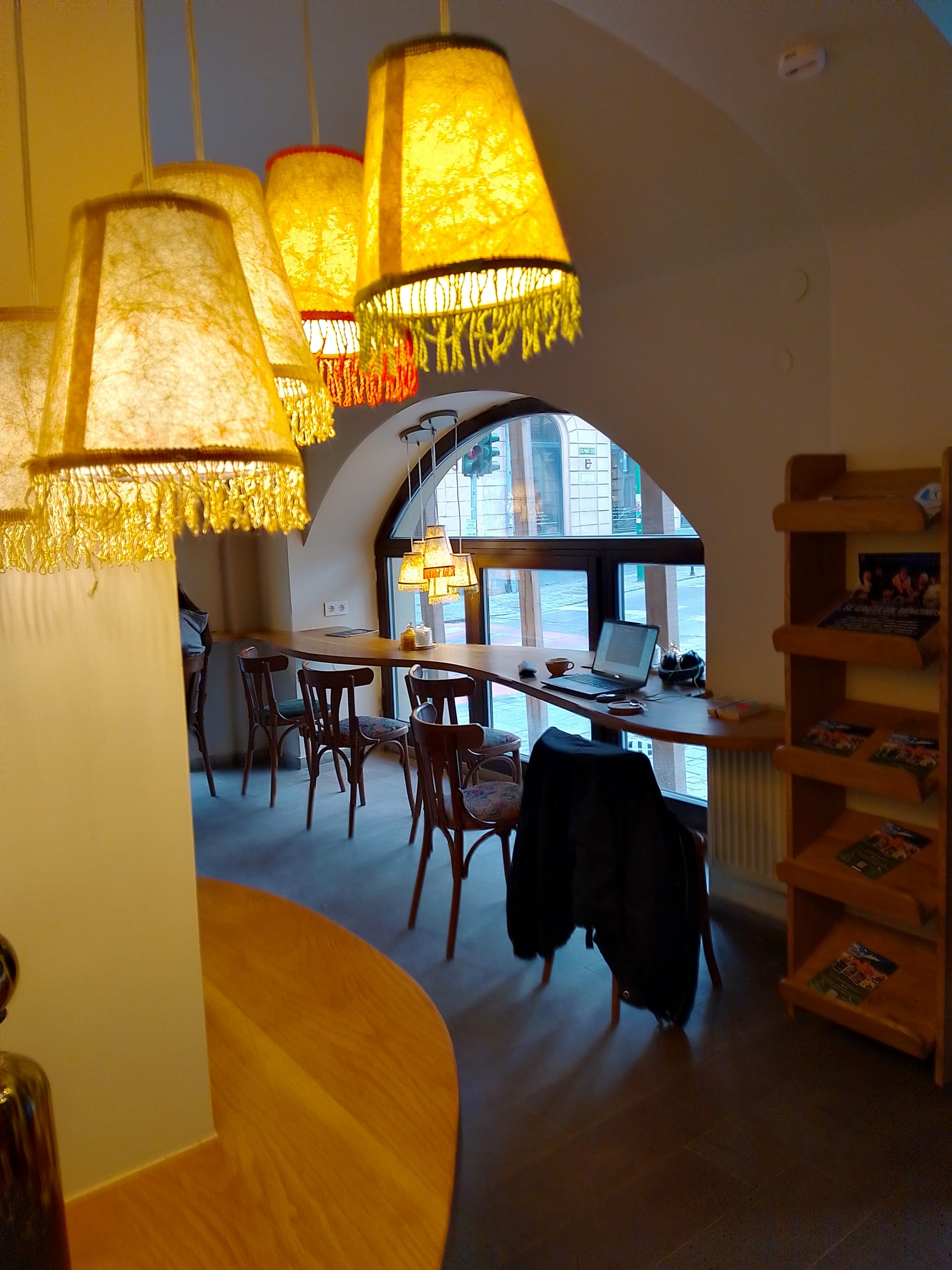
While it may not look like much from the outside. This cafe, the Shakespeare Coffee & Poetry cafe, was my favourite in the city. The inside was very quaint, and it had a large section of table that was perfect for working from; the place even had free Wifi. I came here multiple times and I would recommend it as a great place to focus, or a quiet place to rest.
Brașov was a beautiful city and I felt so lucky to have been able to stay here for a few weeks. What I loved most about the place was how easily I could walk around to all the cool features. You could probably tell from this post just how close everything was. I loved how there were these key features that I often walked passed, and I saw them from all these different angles as I explored the city.
The other reason I loved Brașov was its proximity to the mountains. Using this city as a base, I was able to do all the other hikes (and explore Sighișoara) that I have previously made posts about. Trying to do these hikes from Bucharest would have been harder as the distances to travel would have been greater. So if you ever visit Romania, and you like me love going hiking, I can highly recommend that you stop by Brașov.
Thanks for reading – Edward
Written 10th of March 2024
Please comment below if you have any questions or thoughts on any pictures.